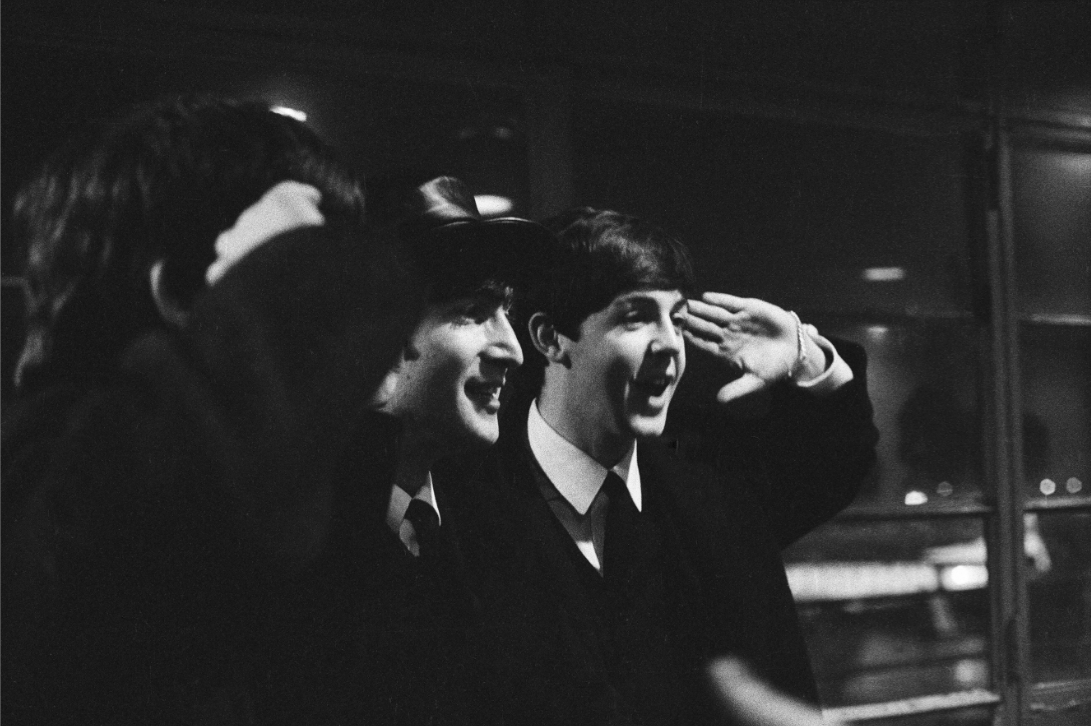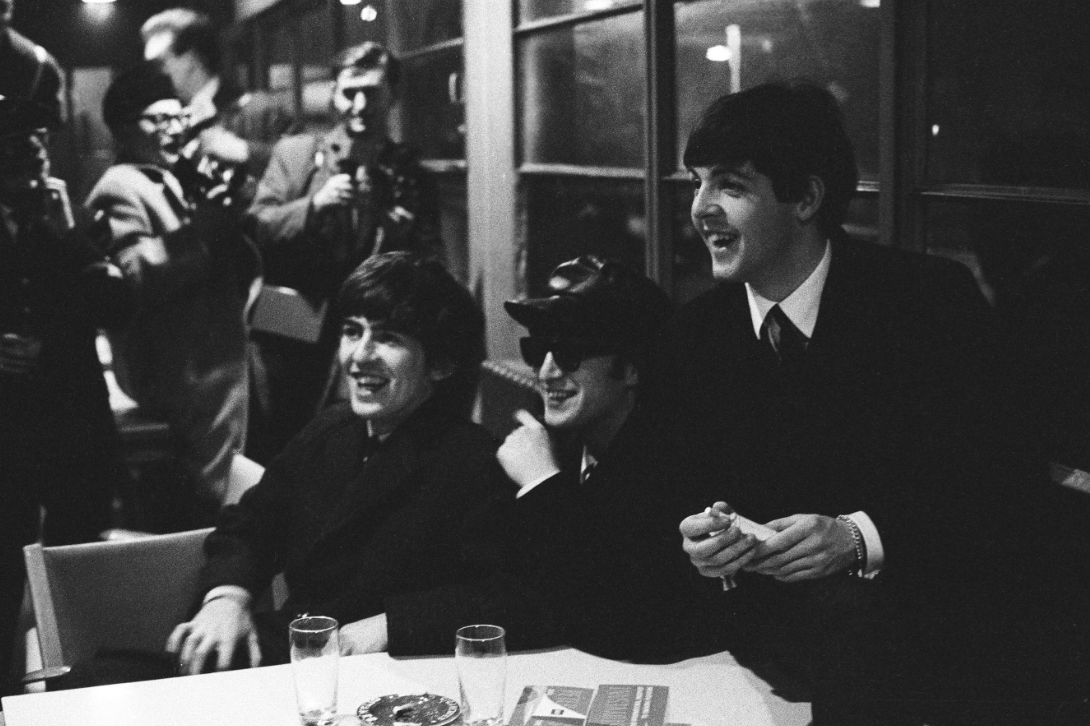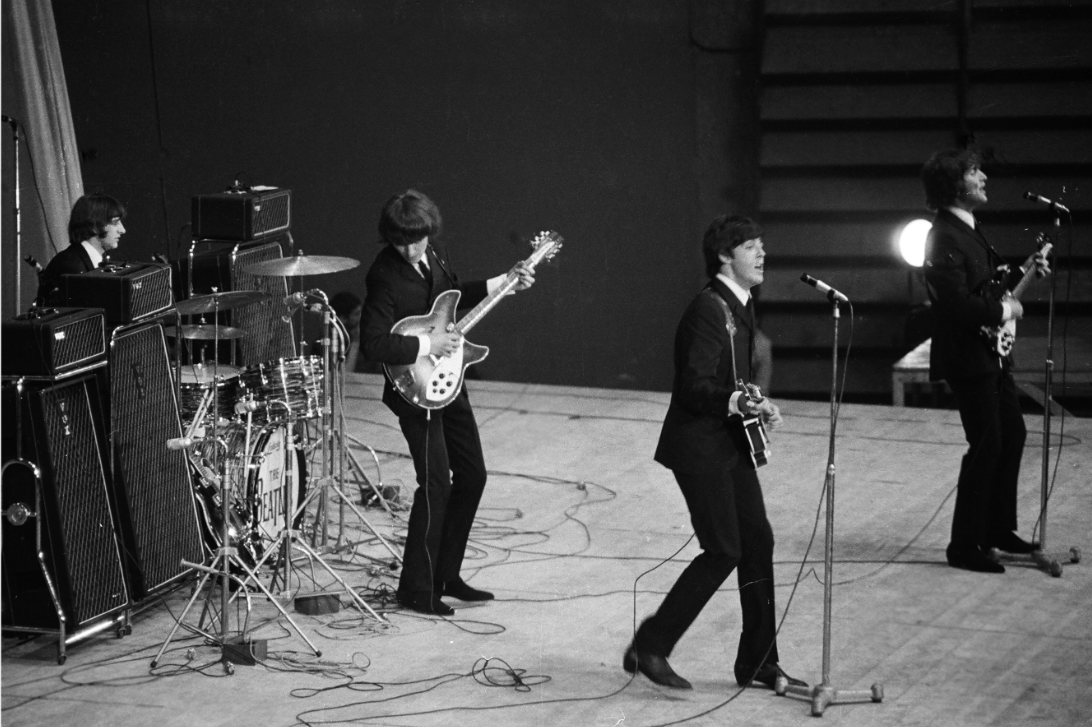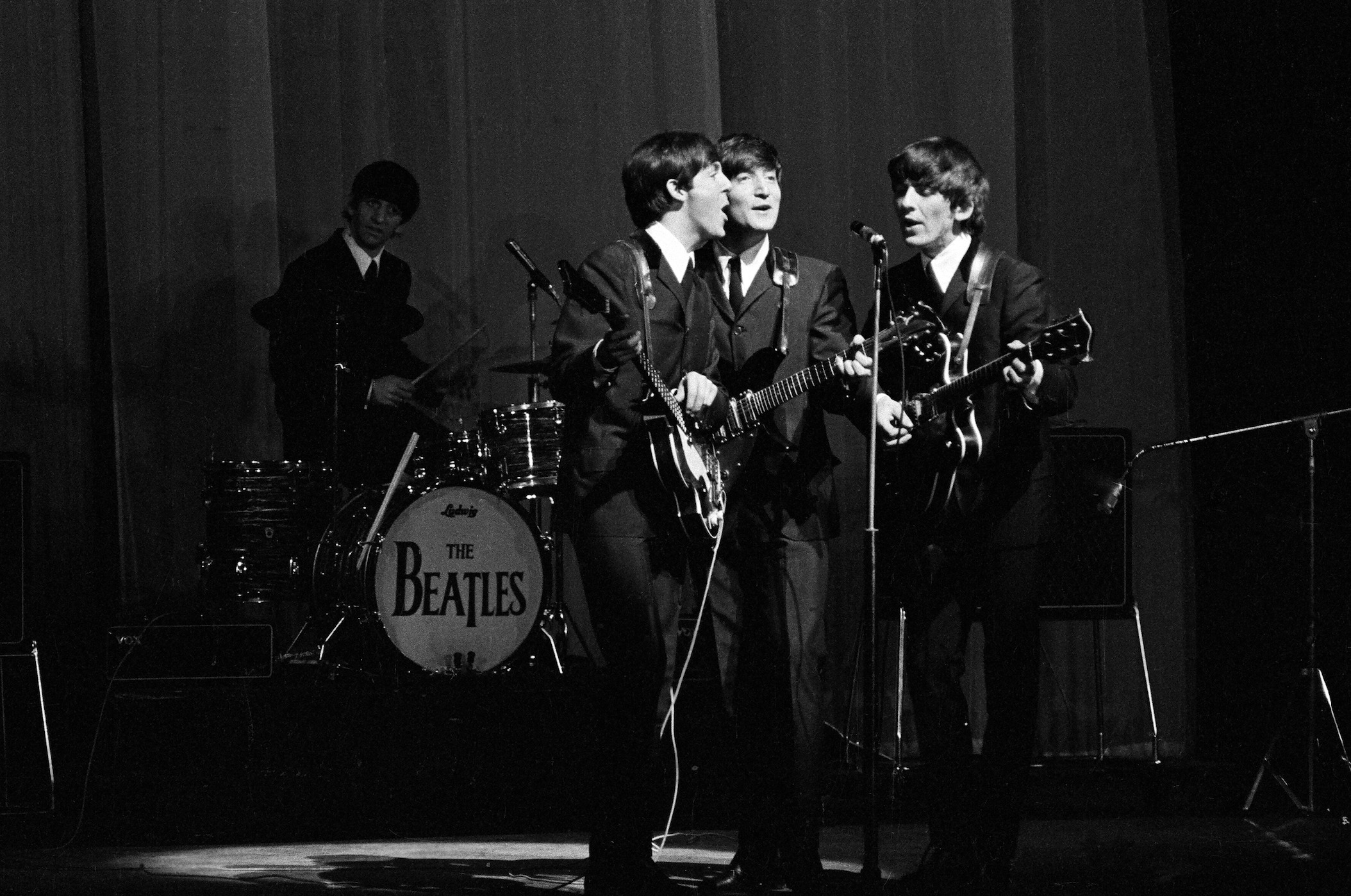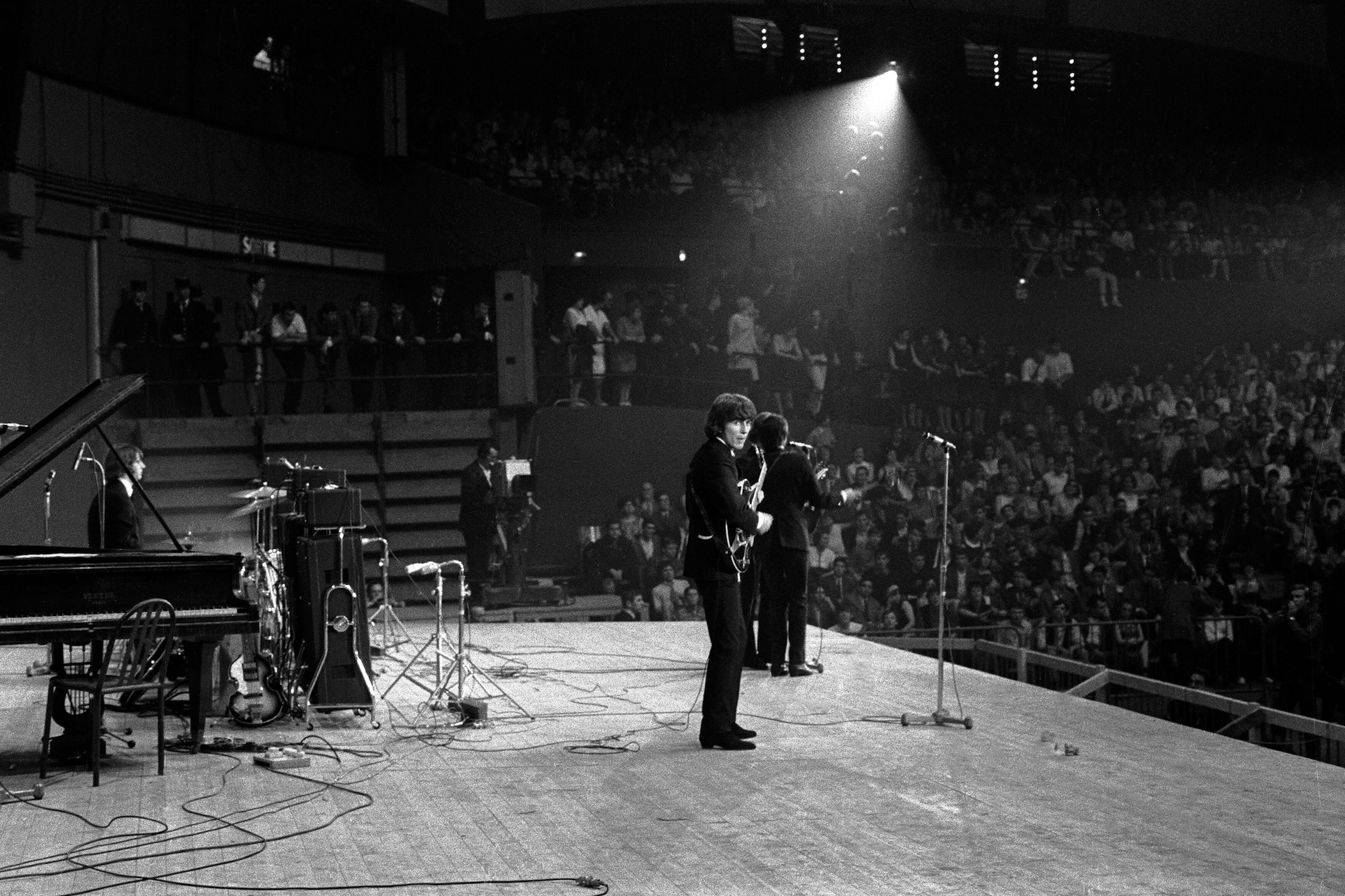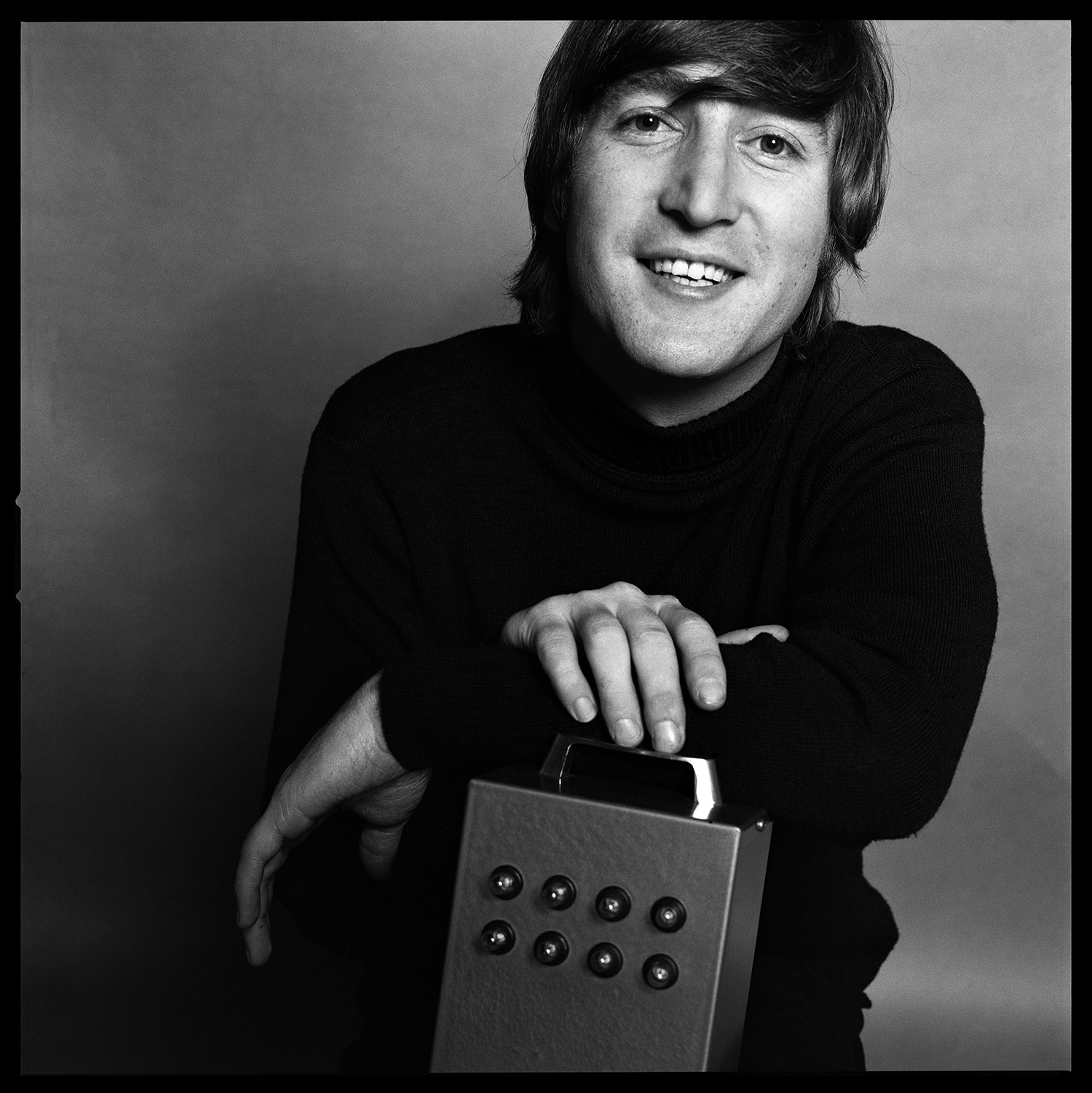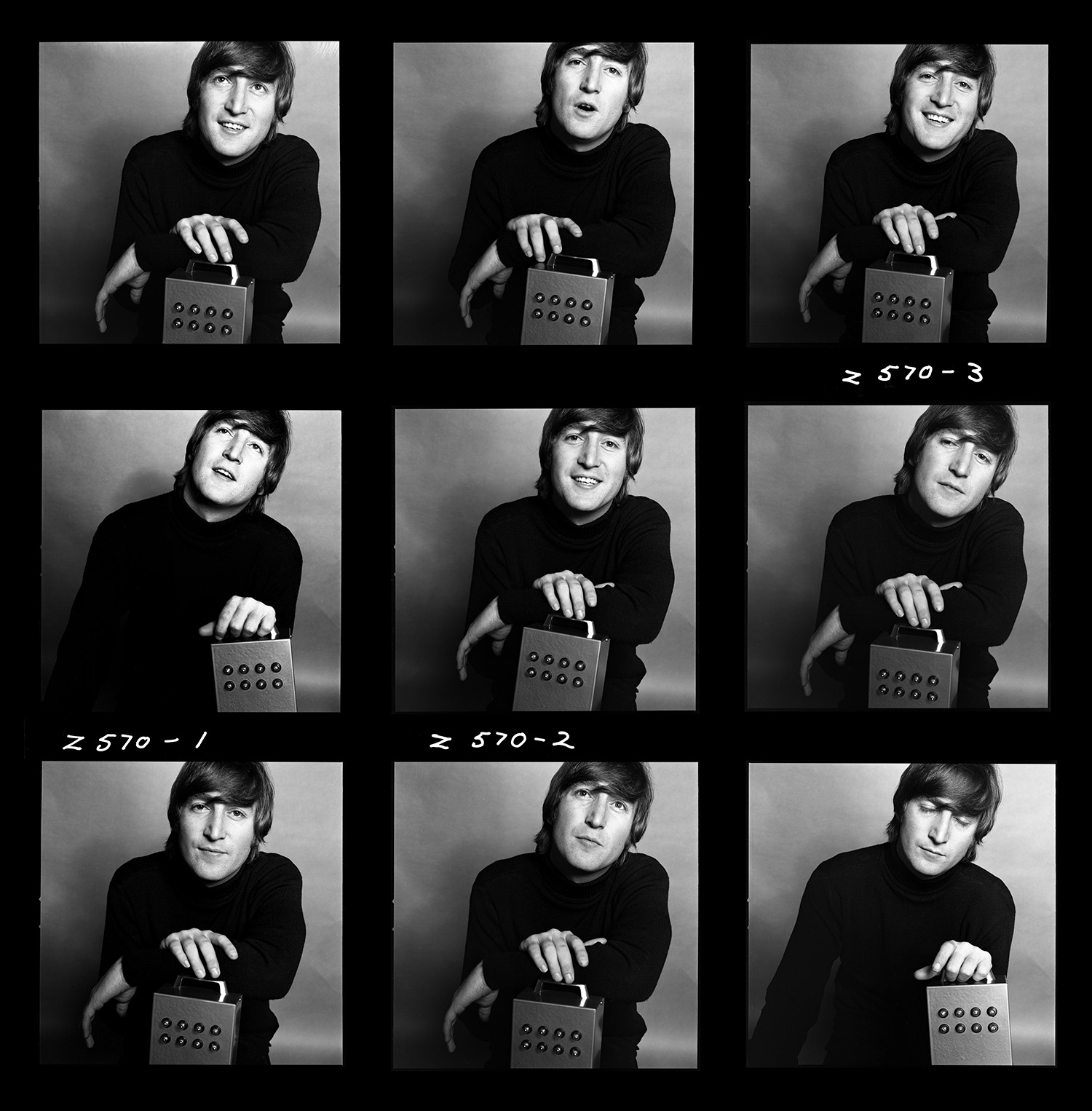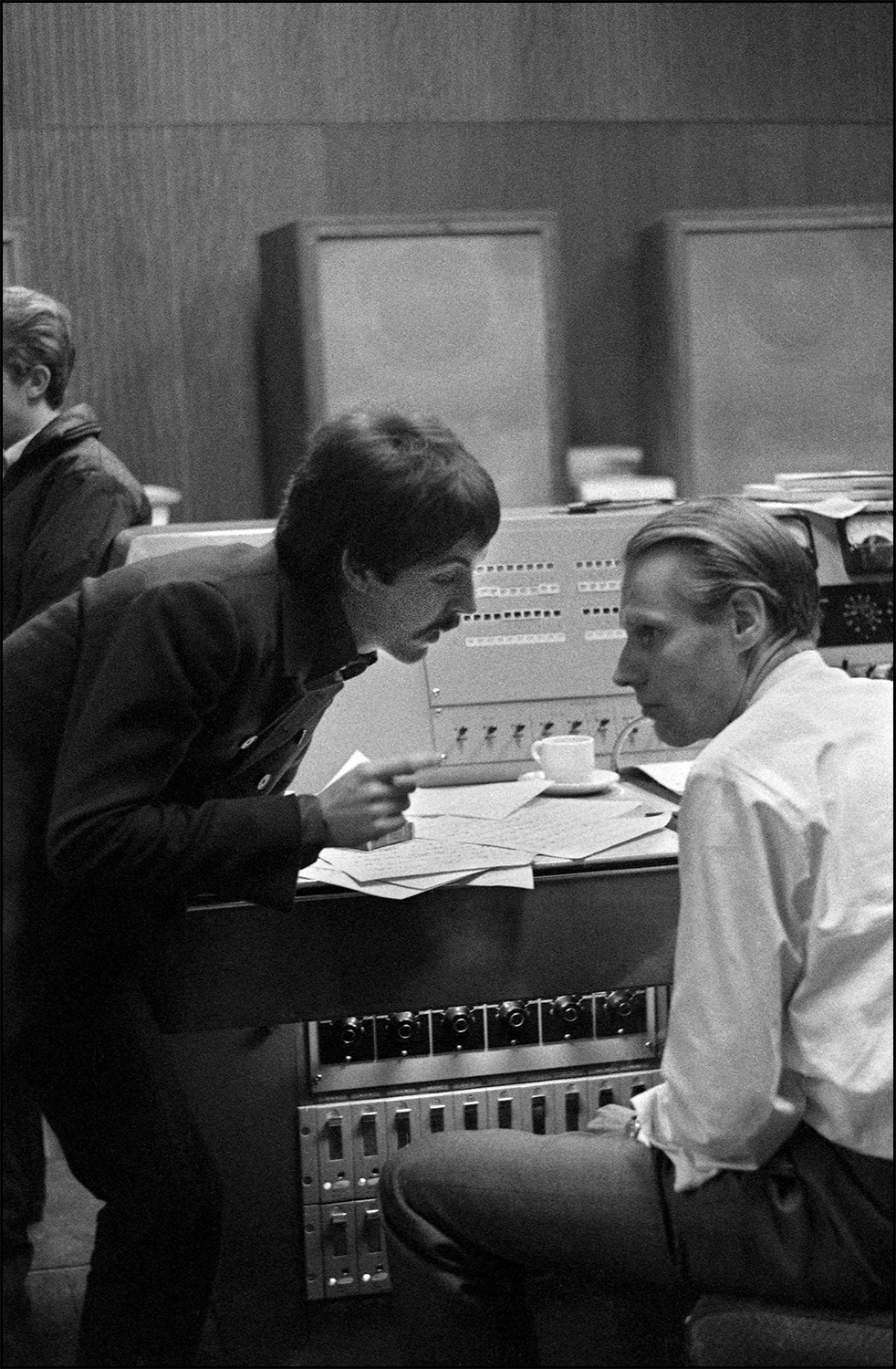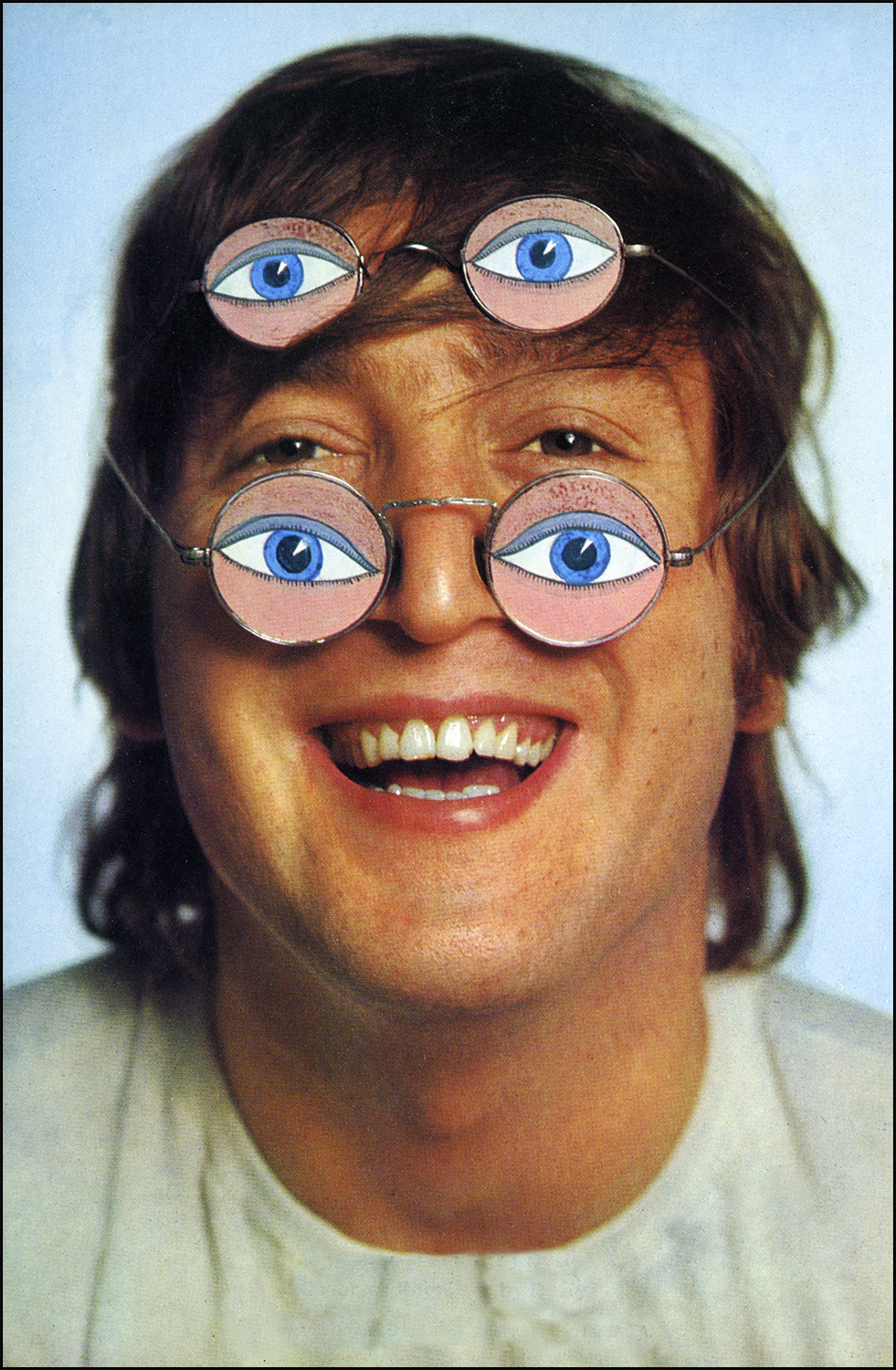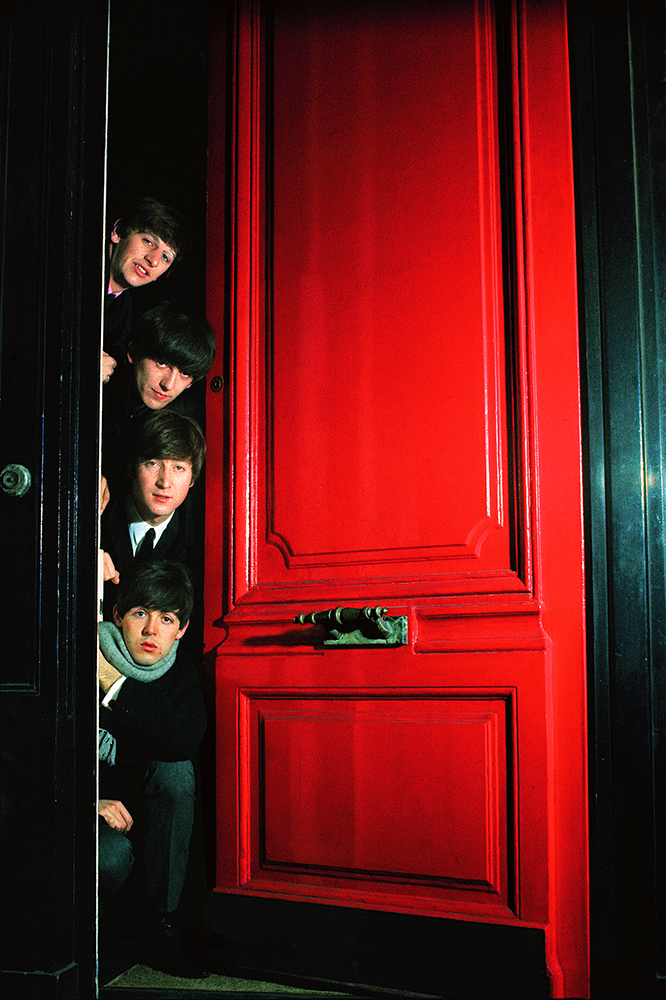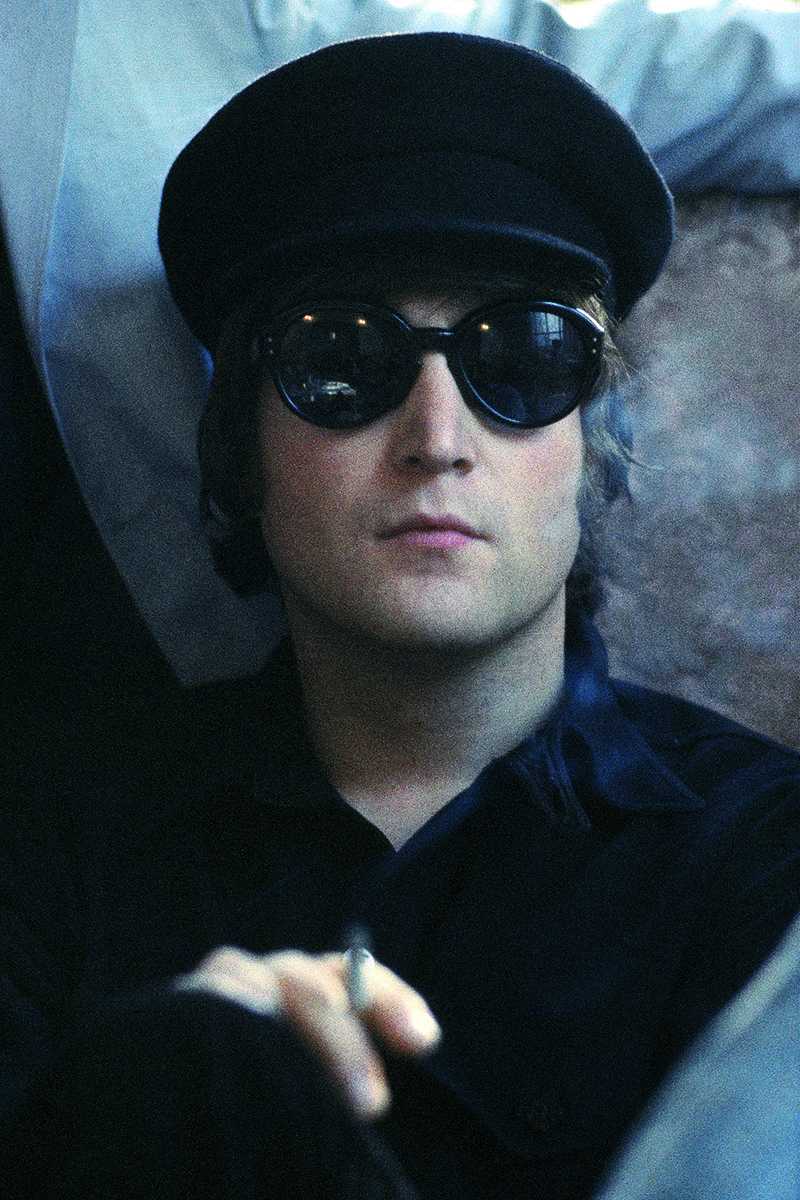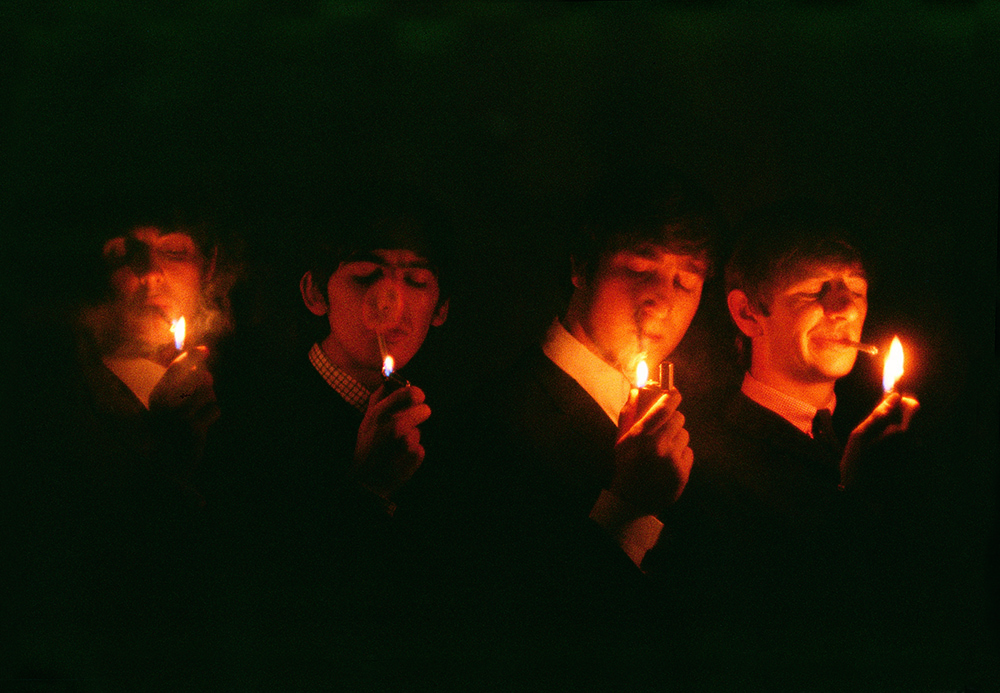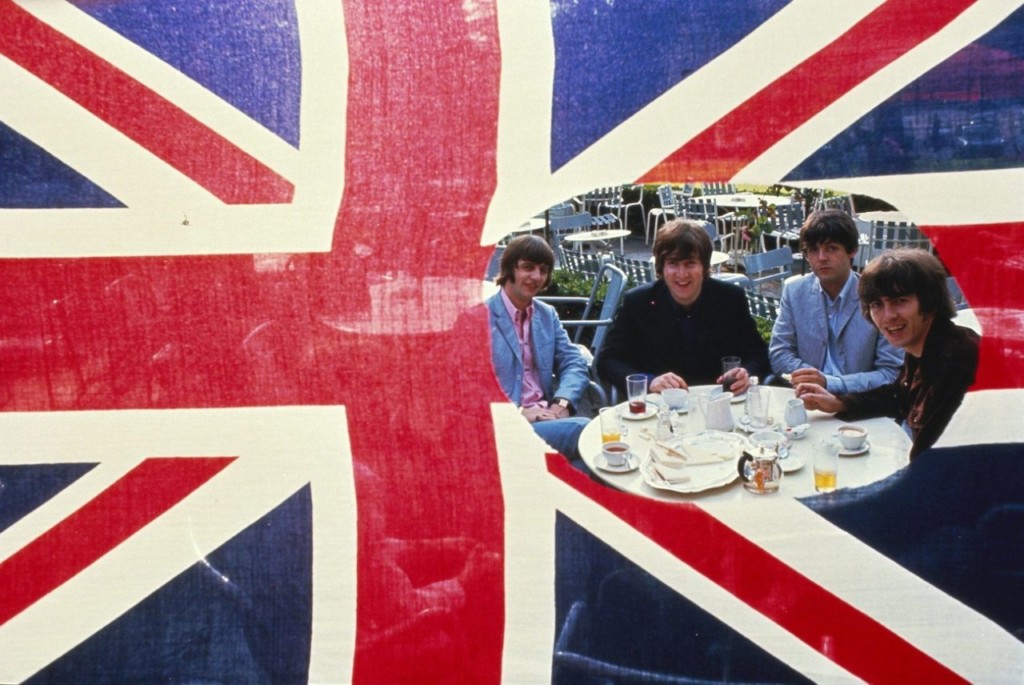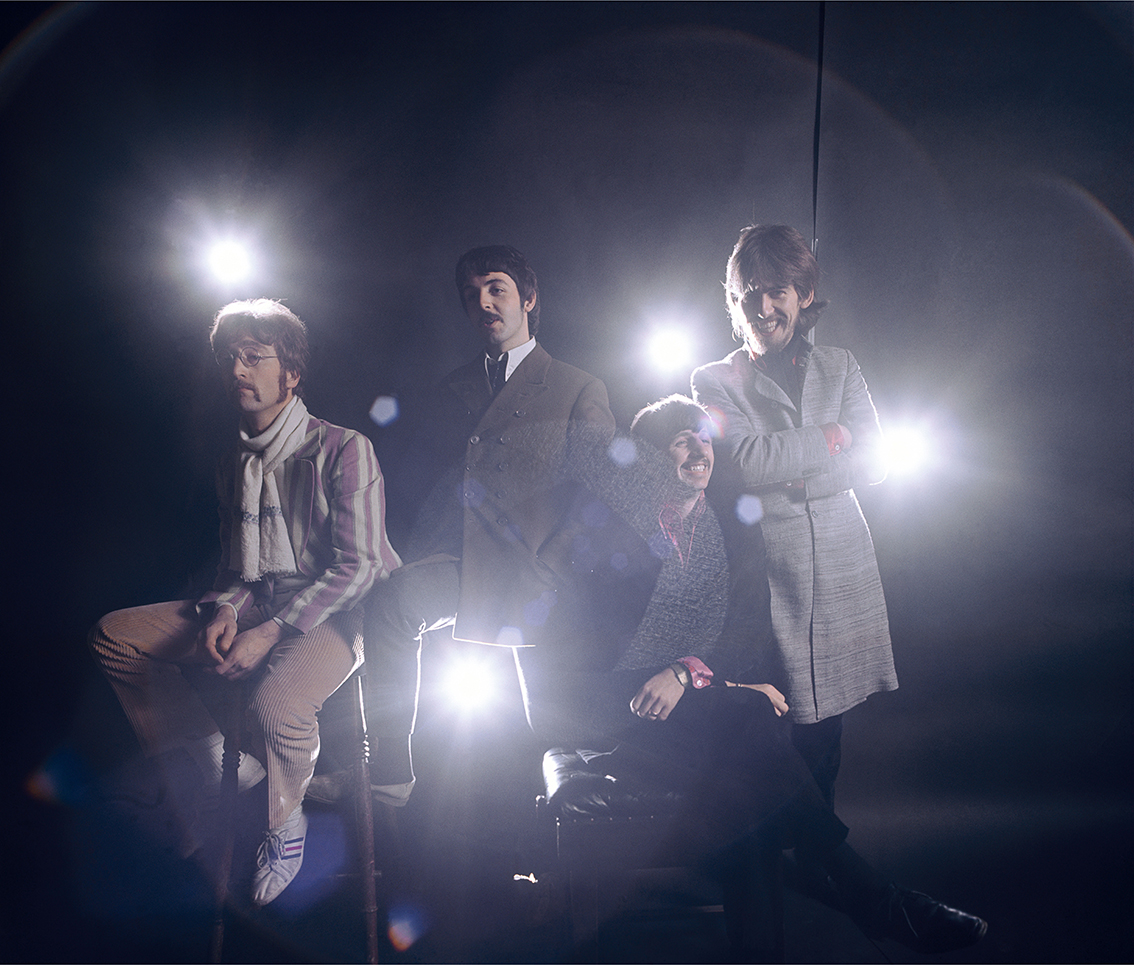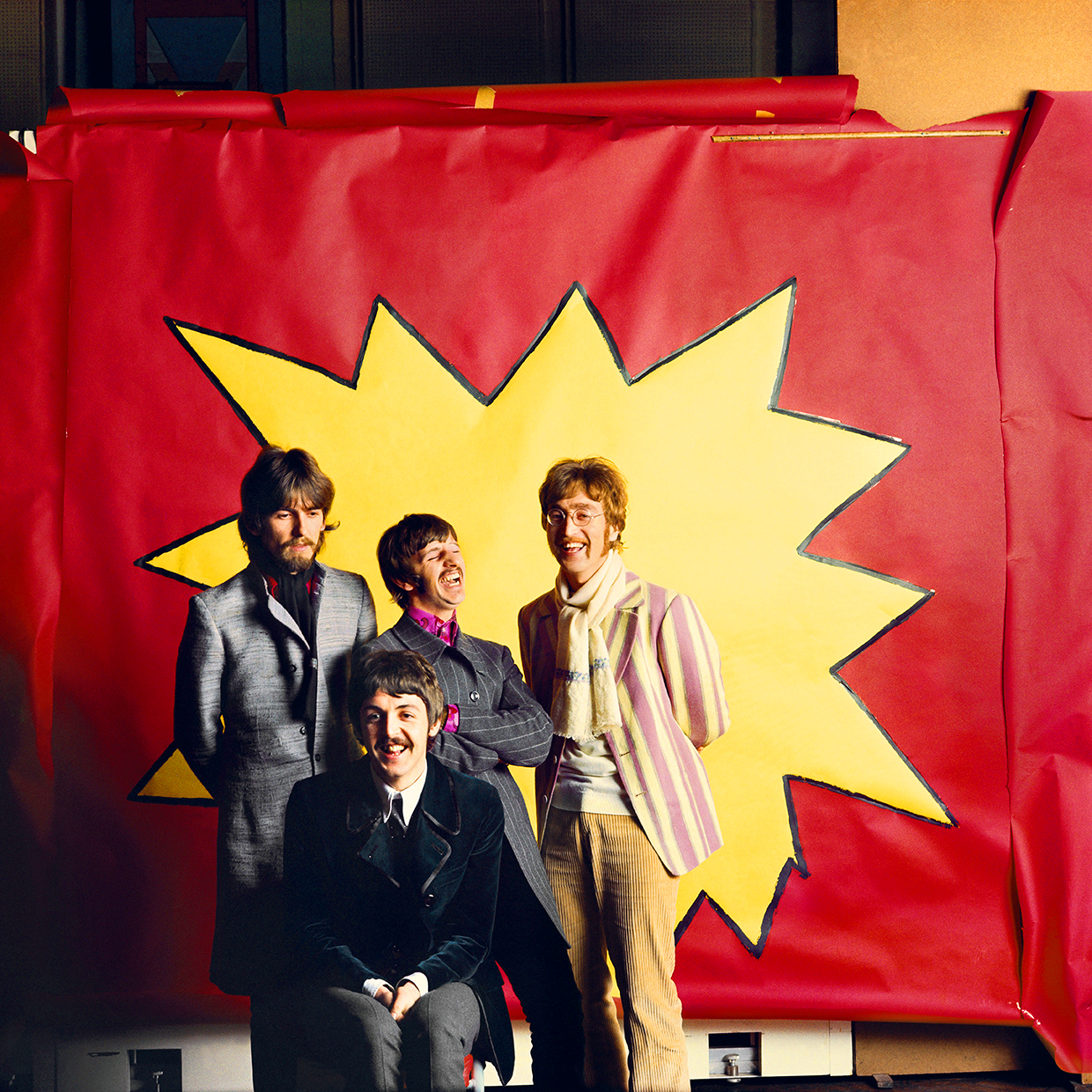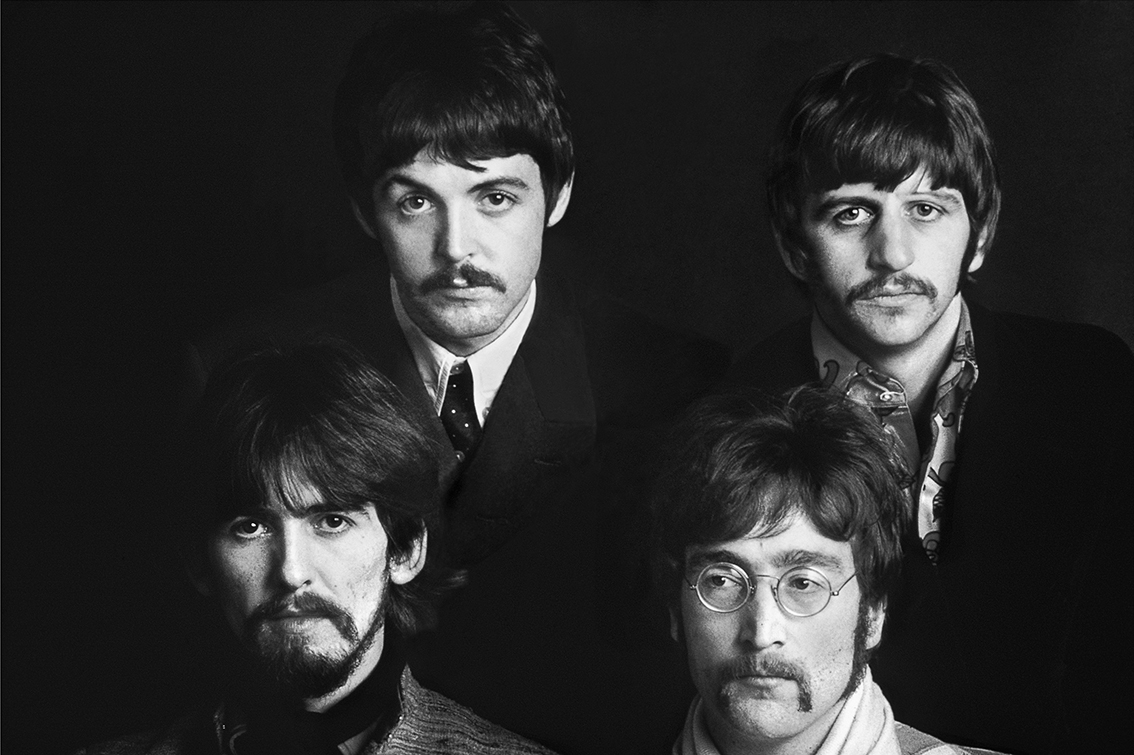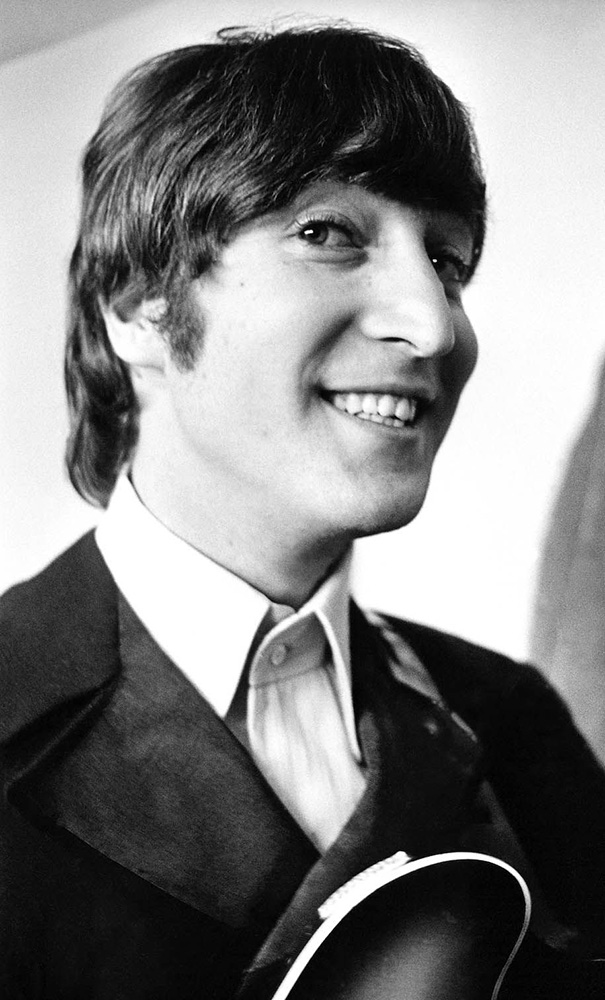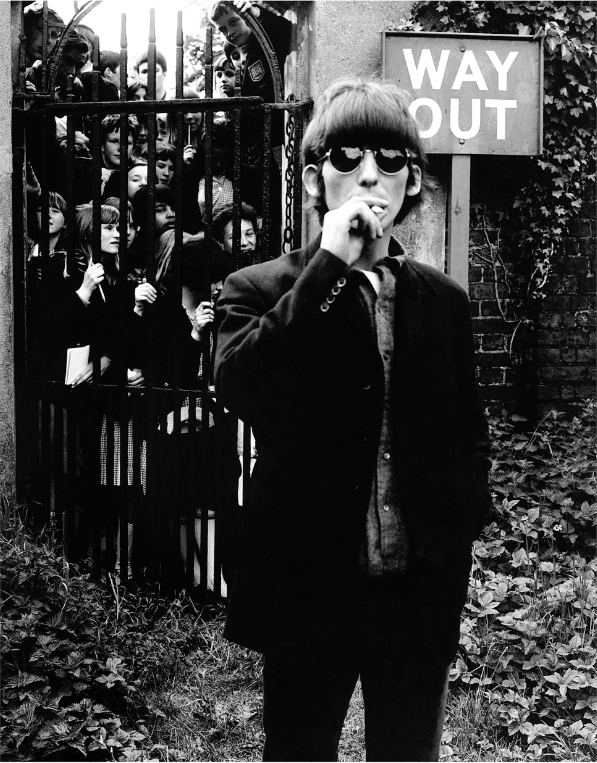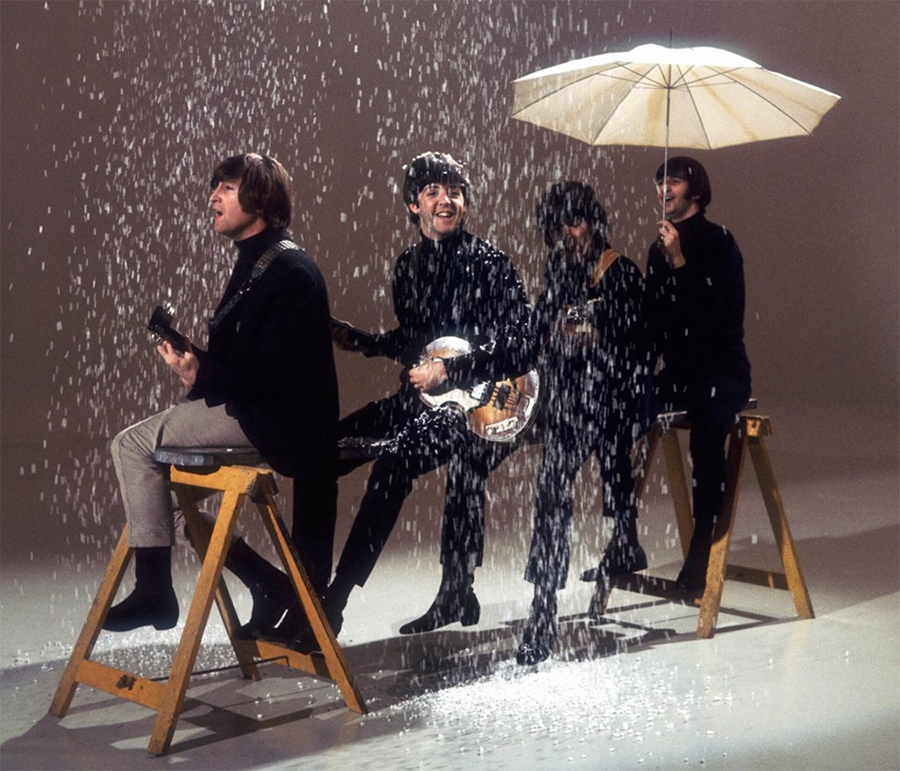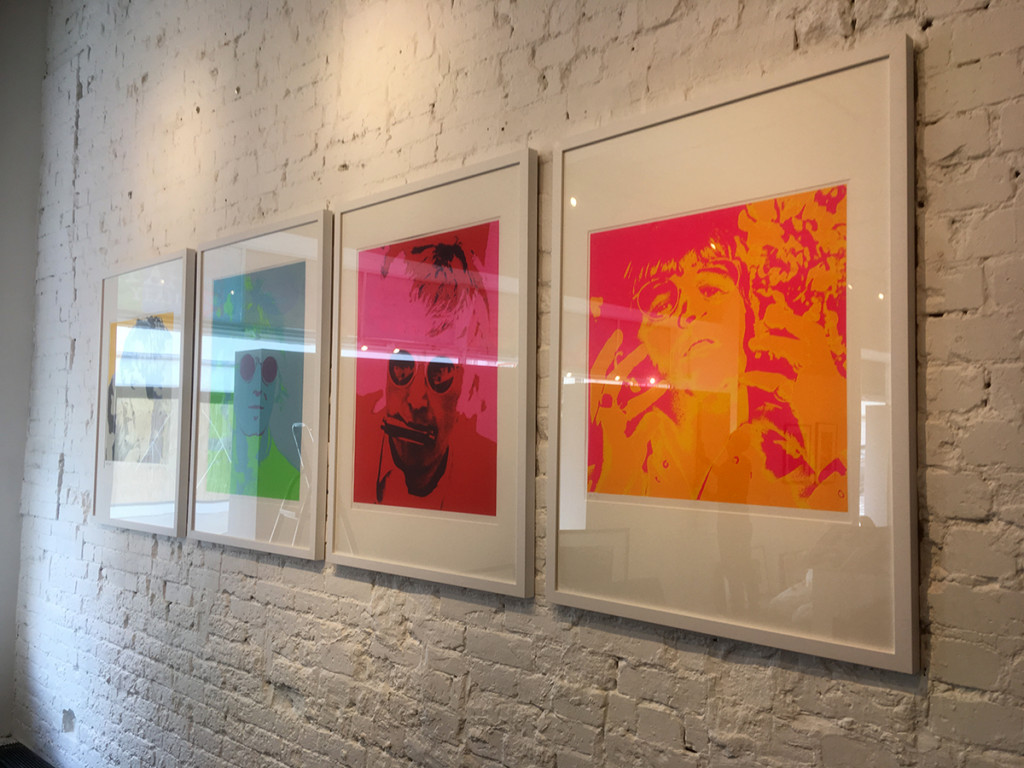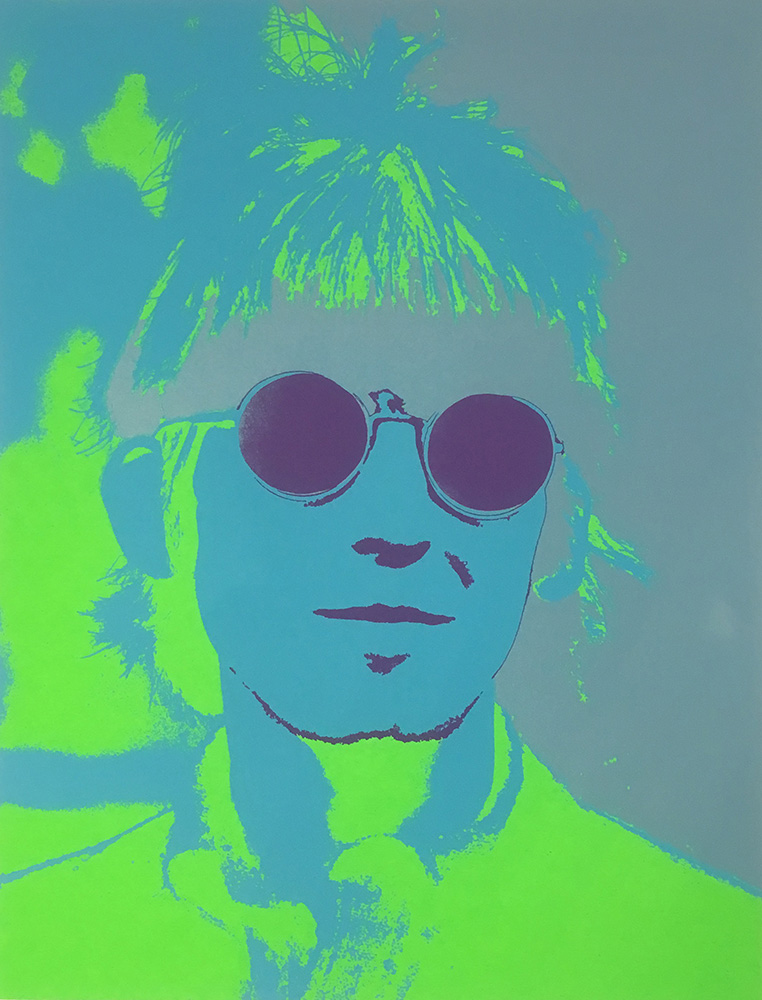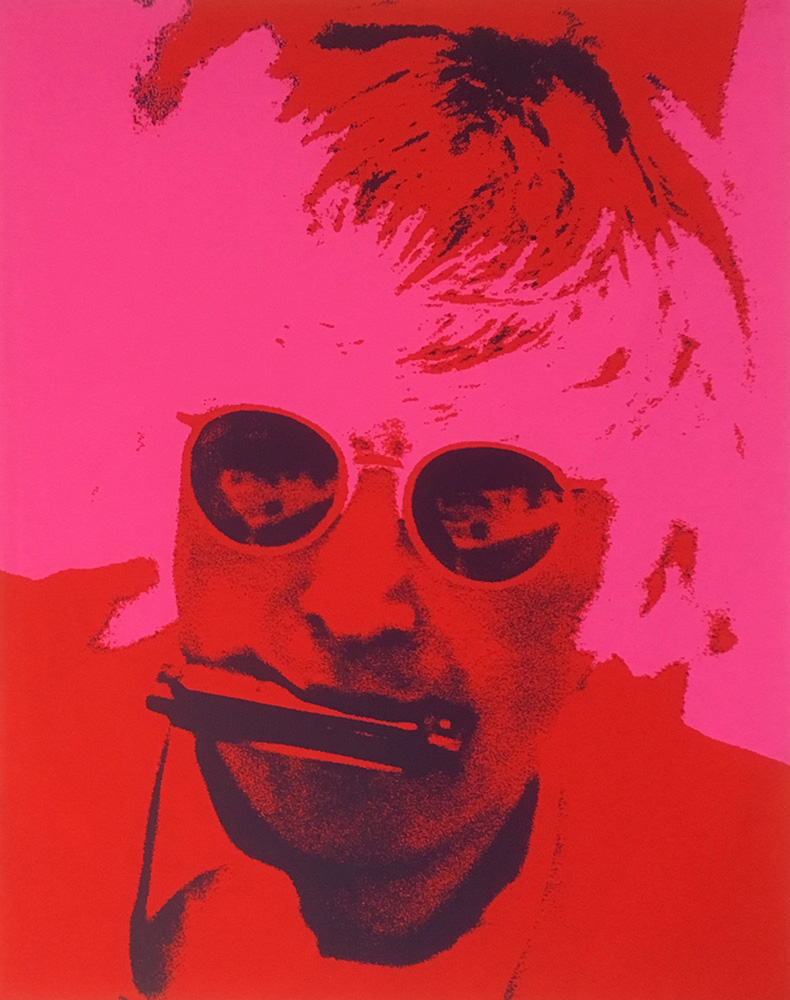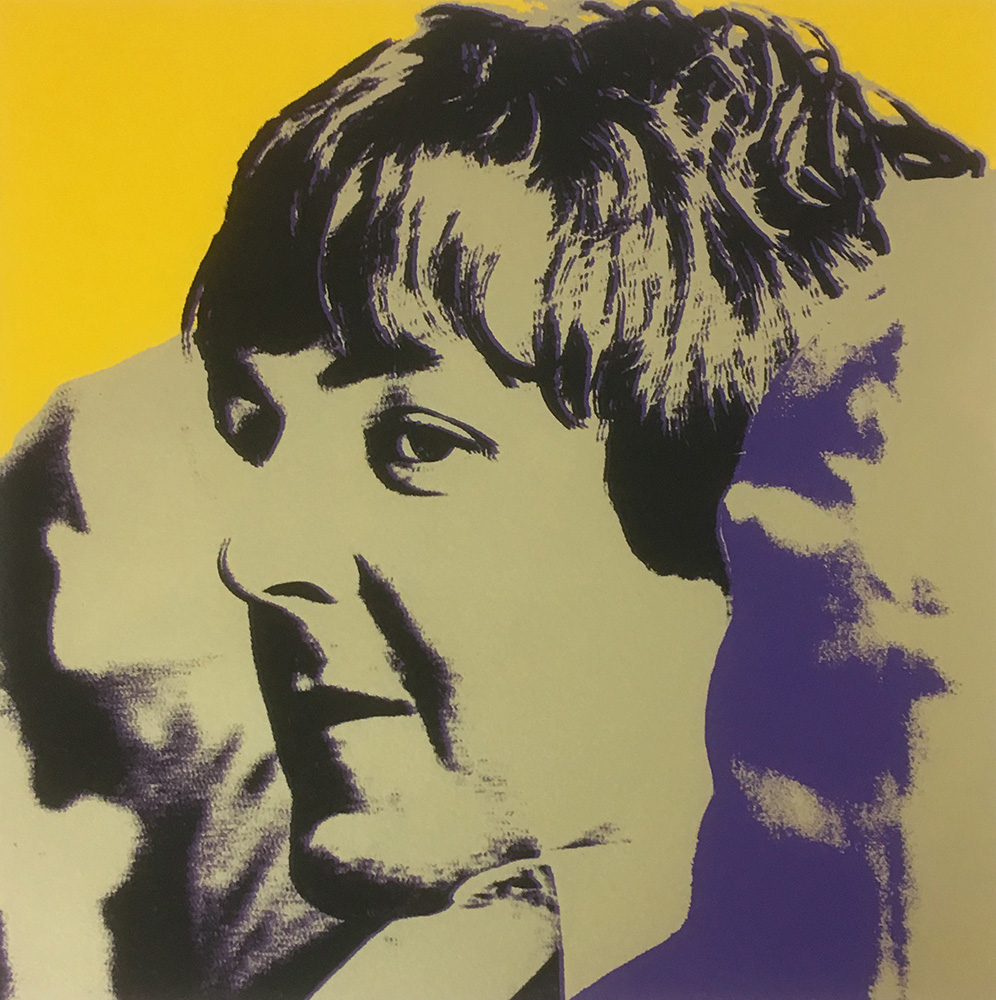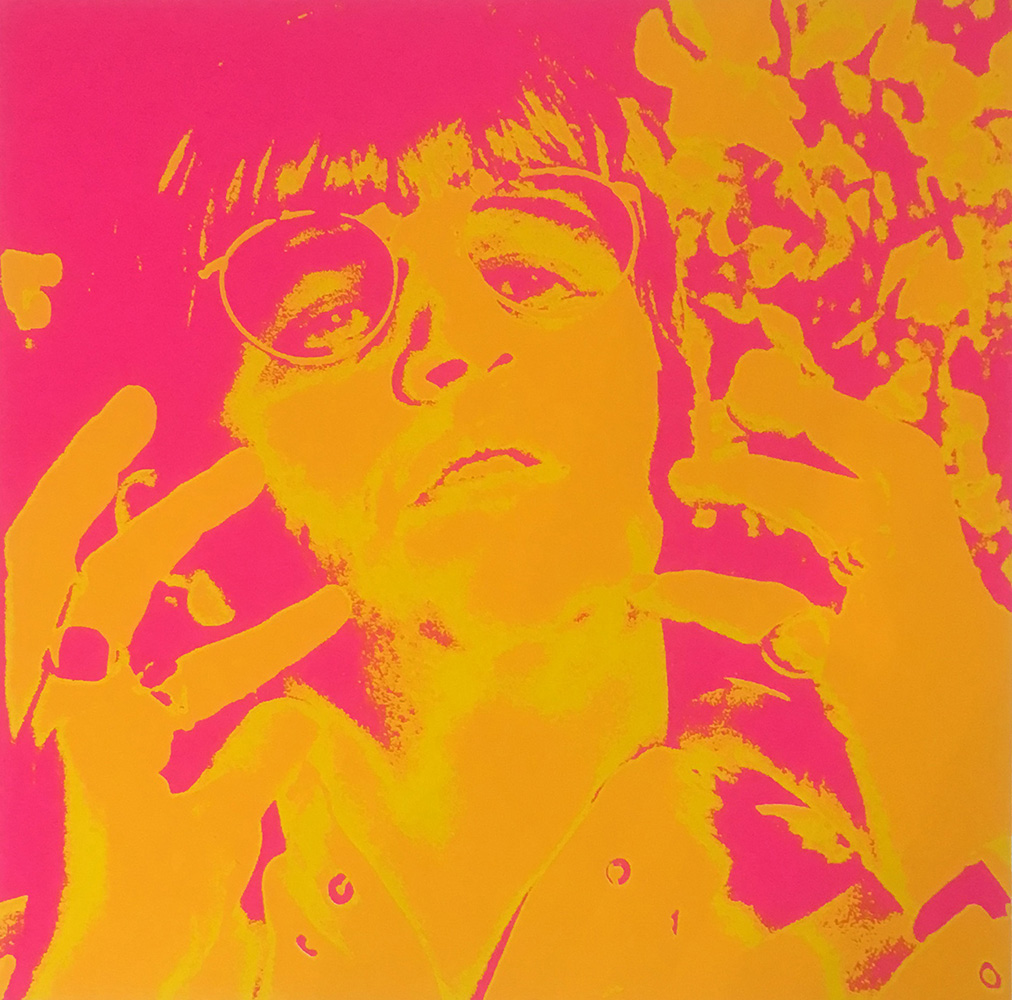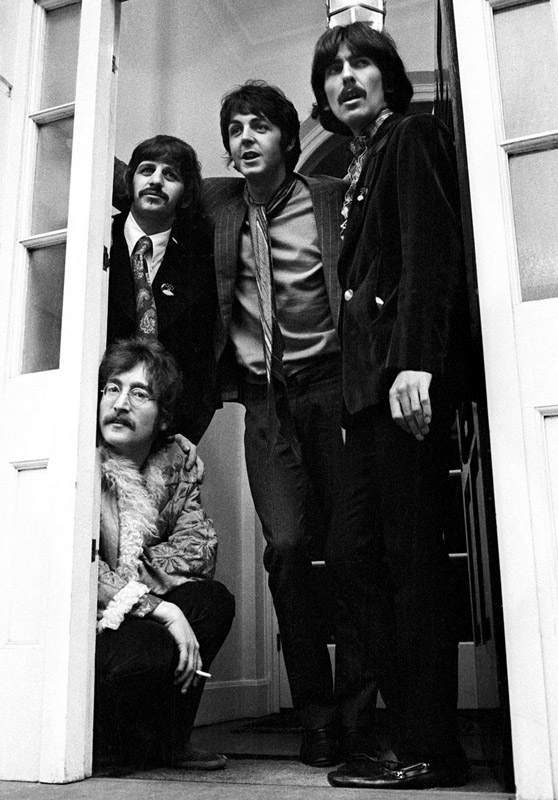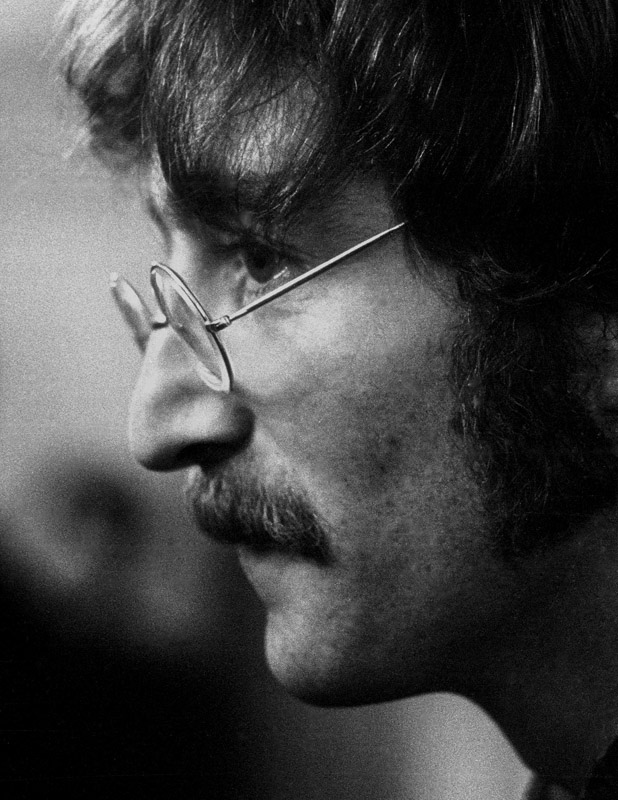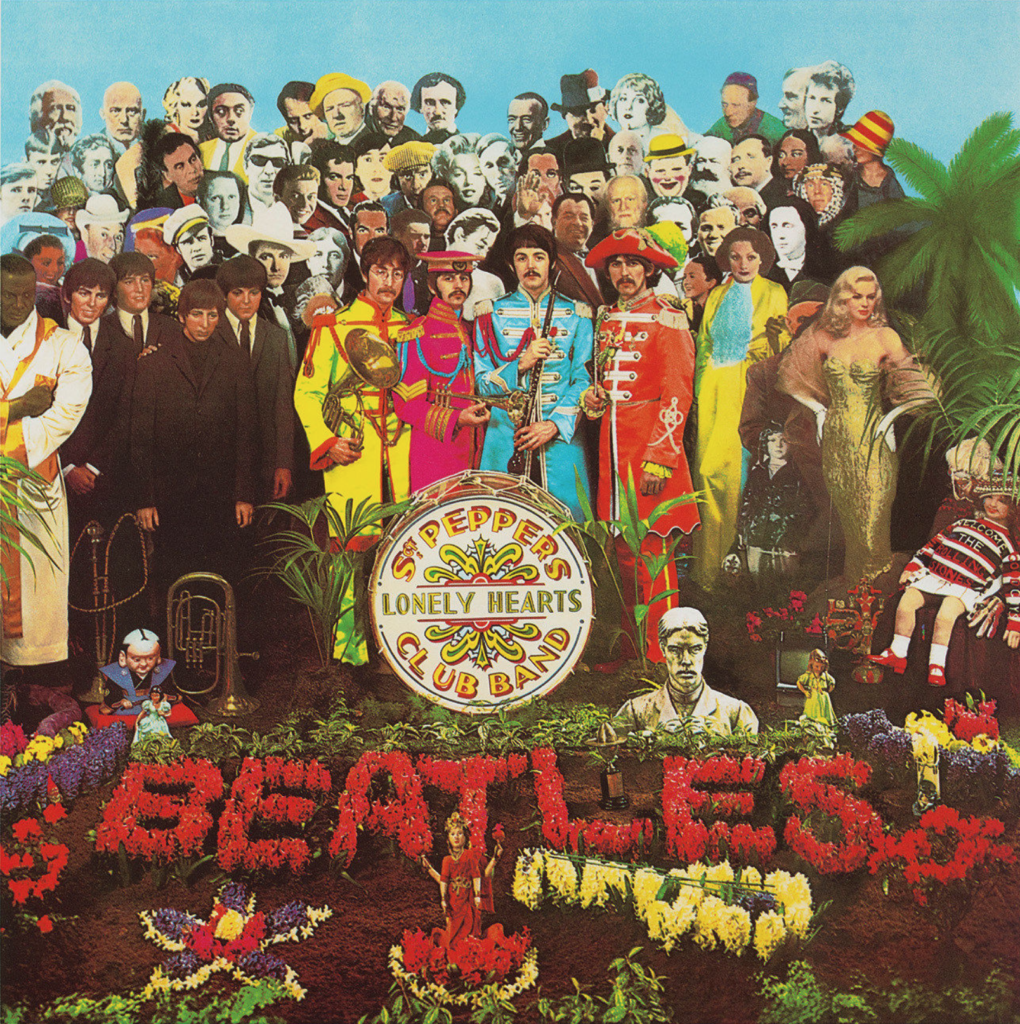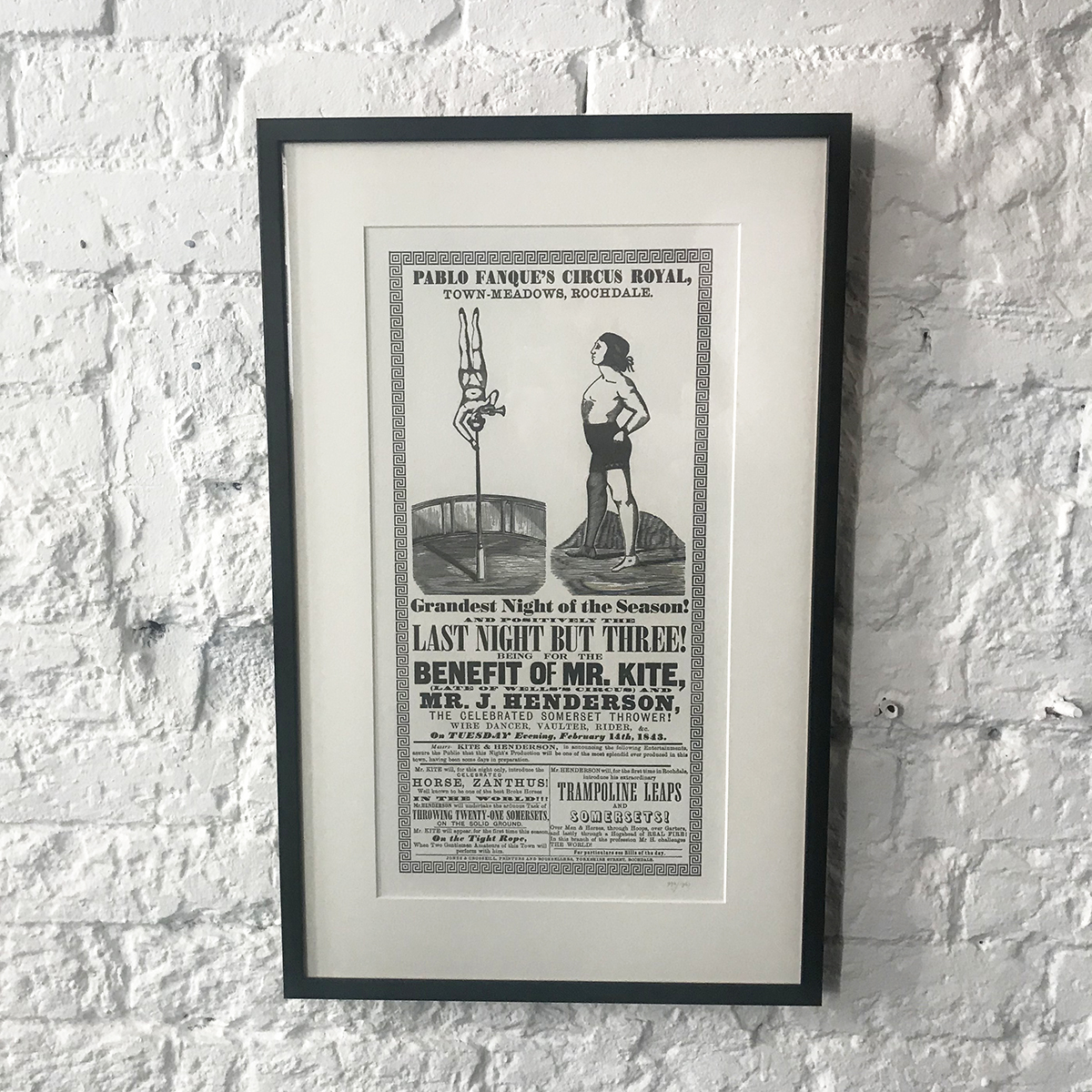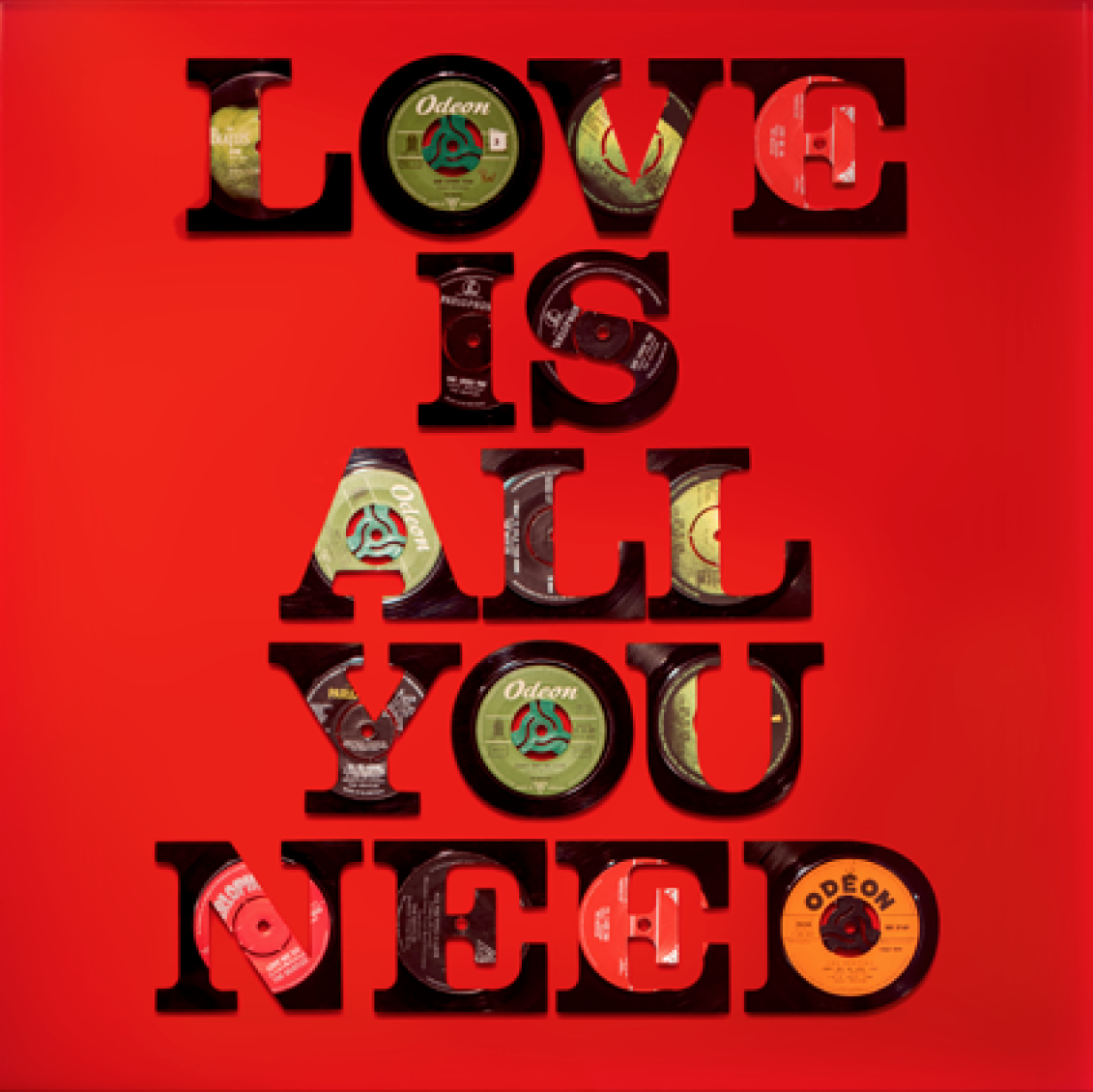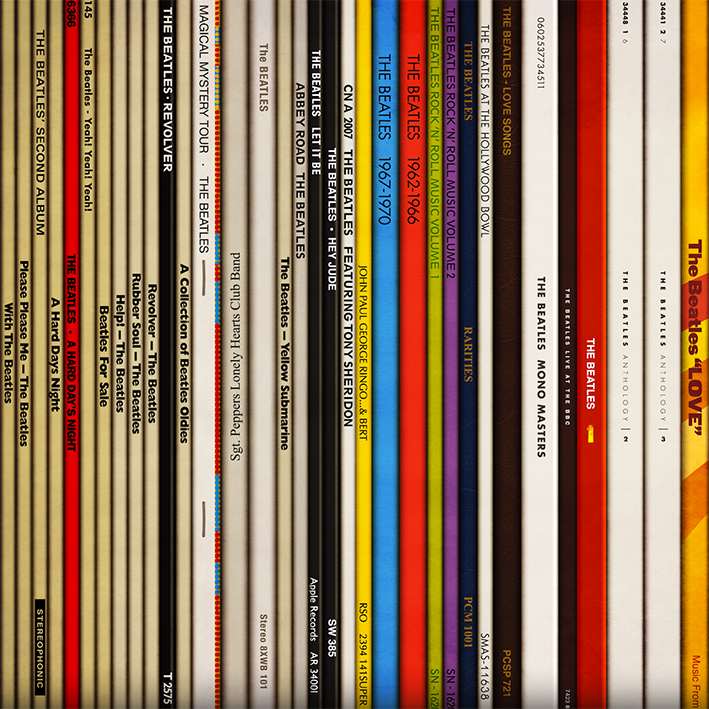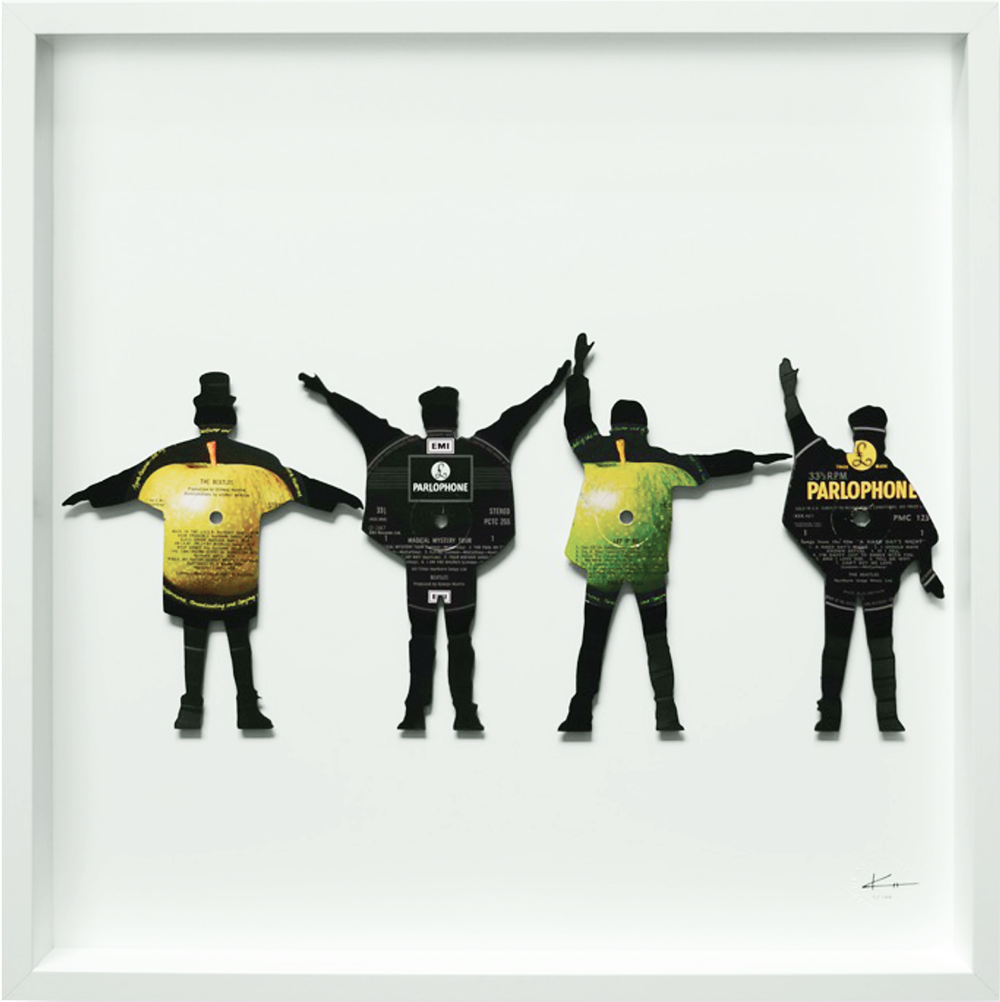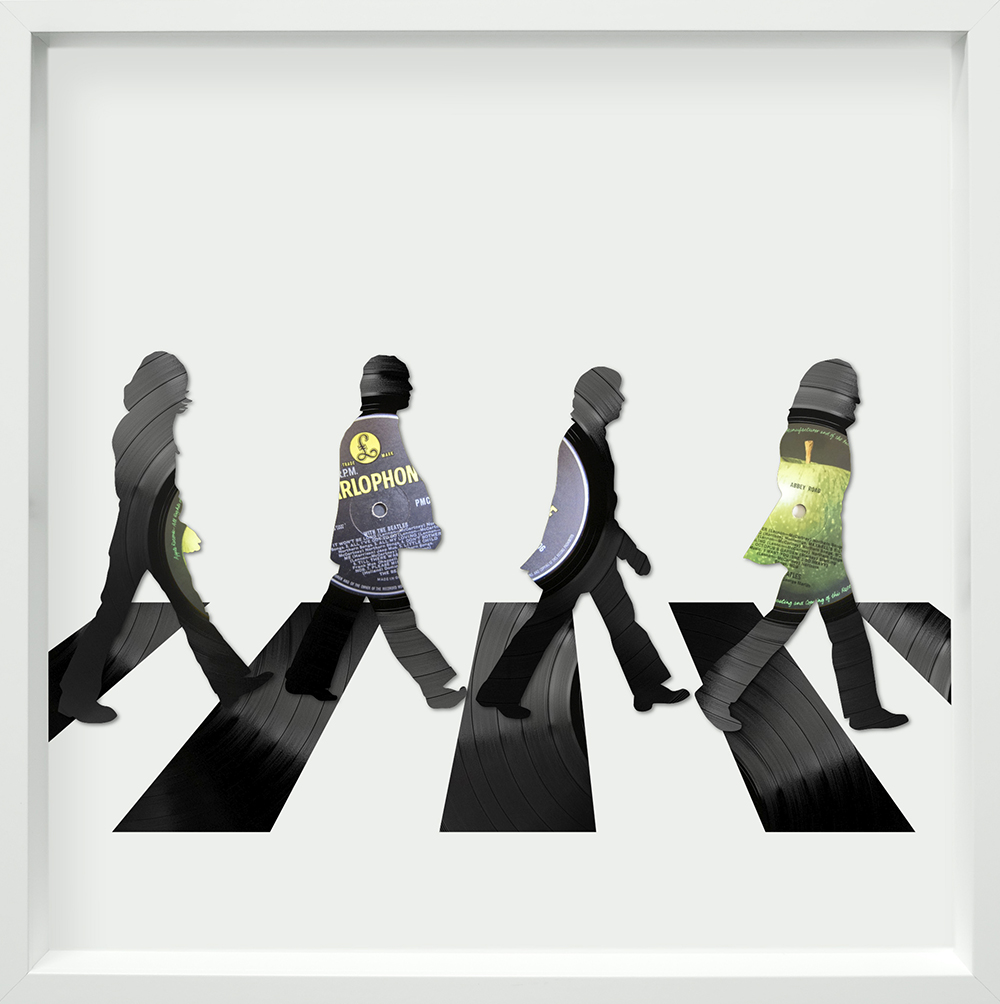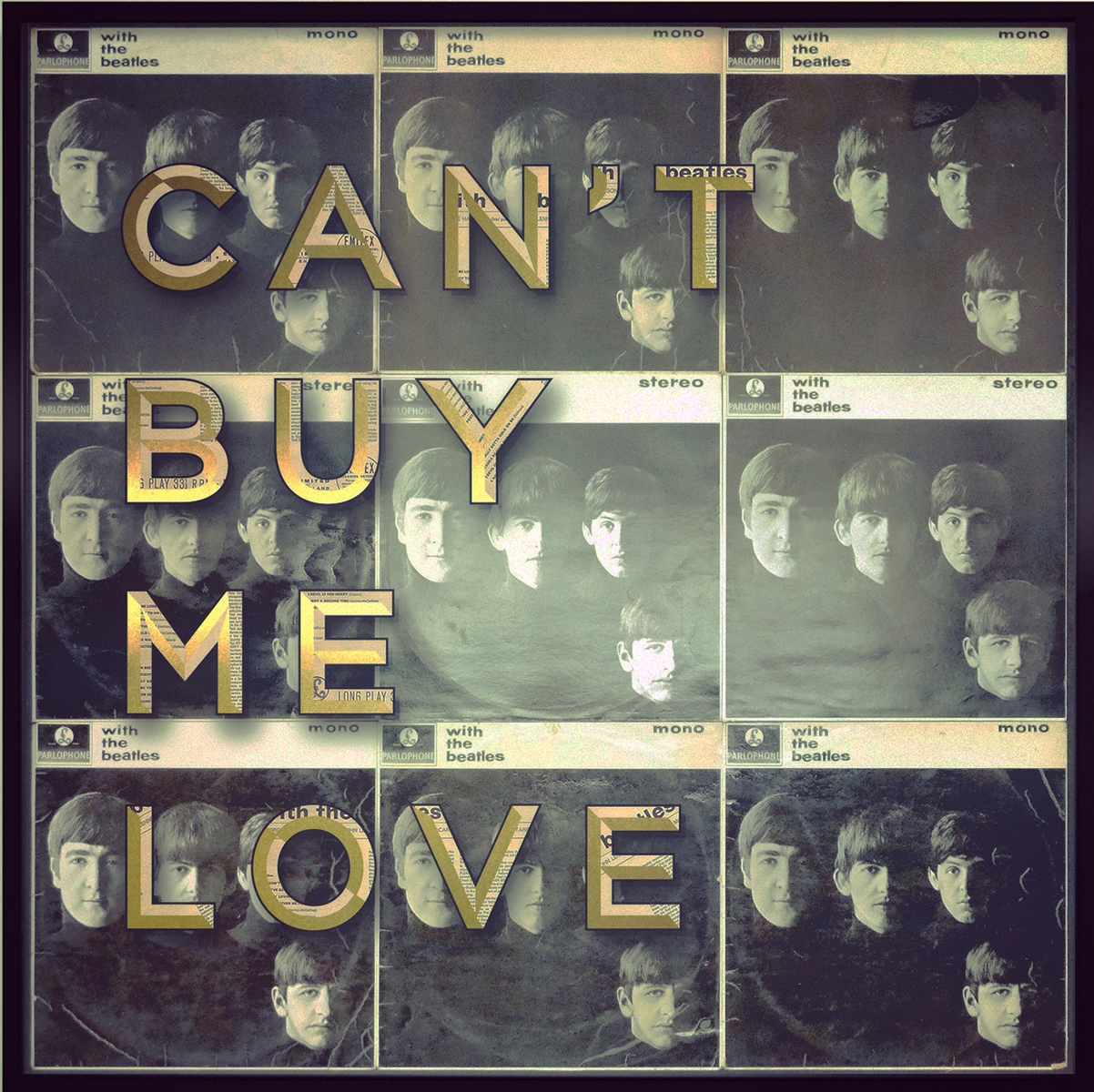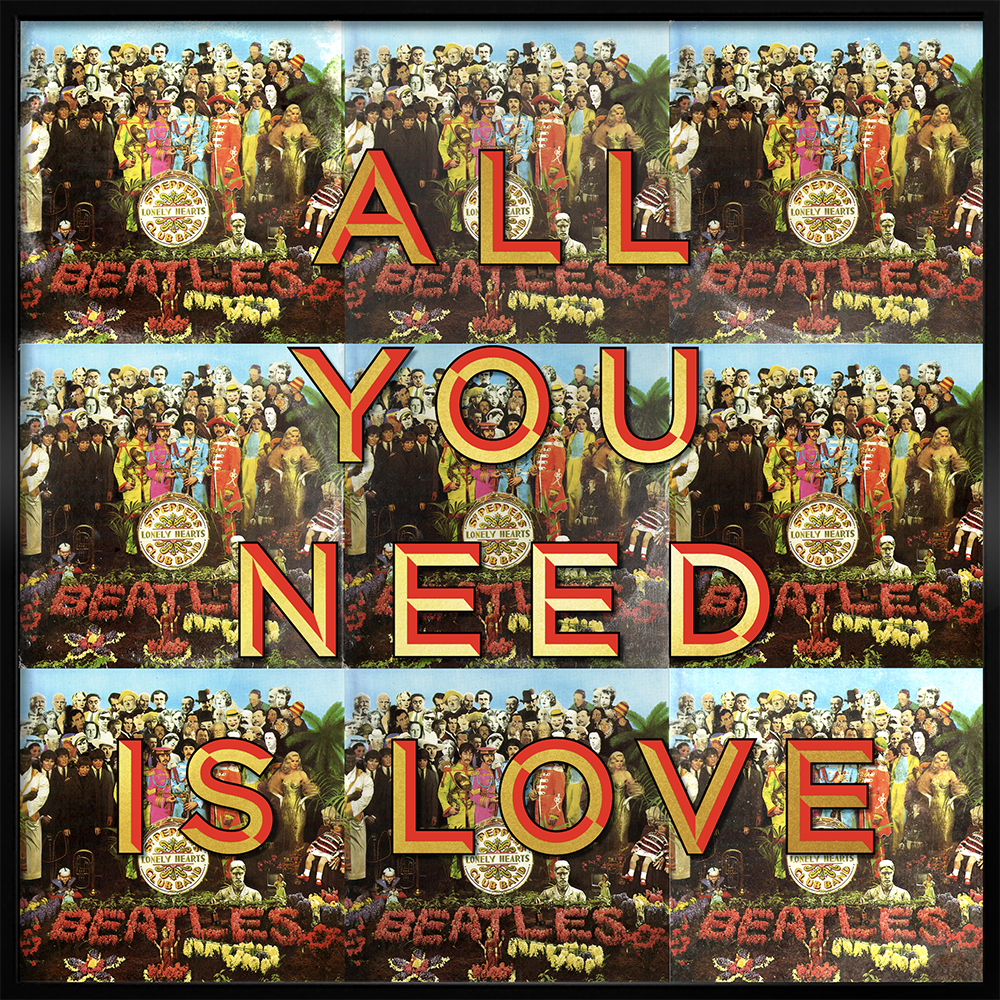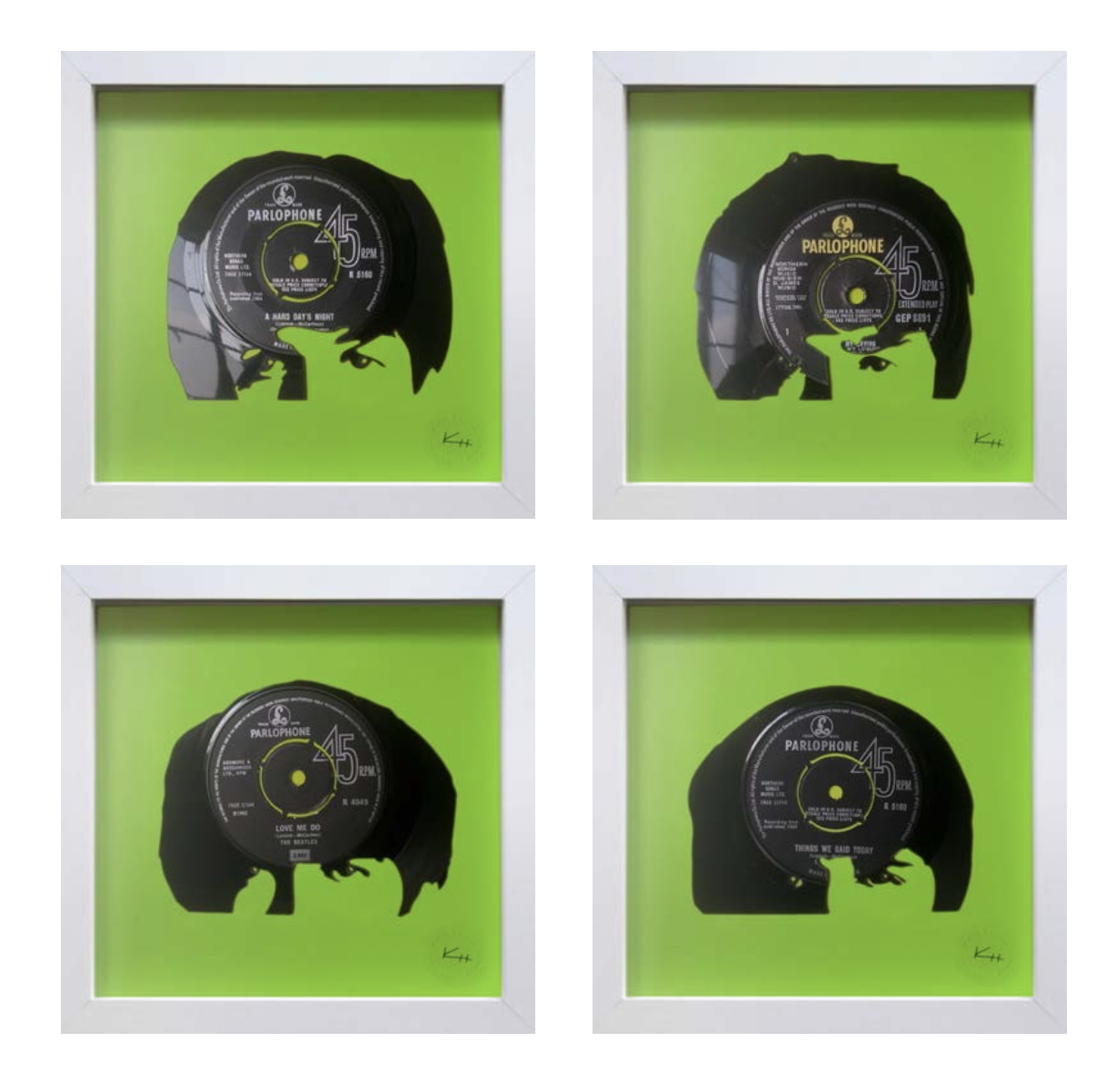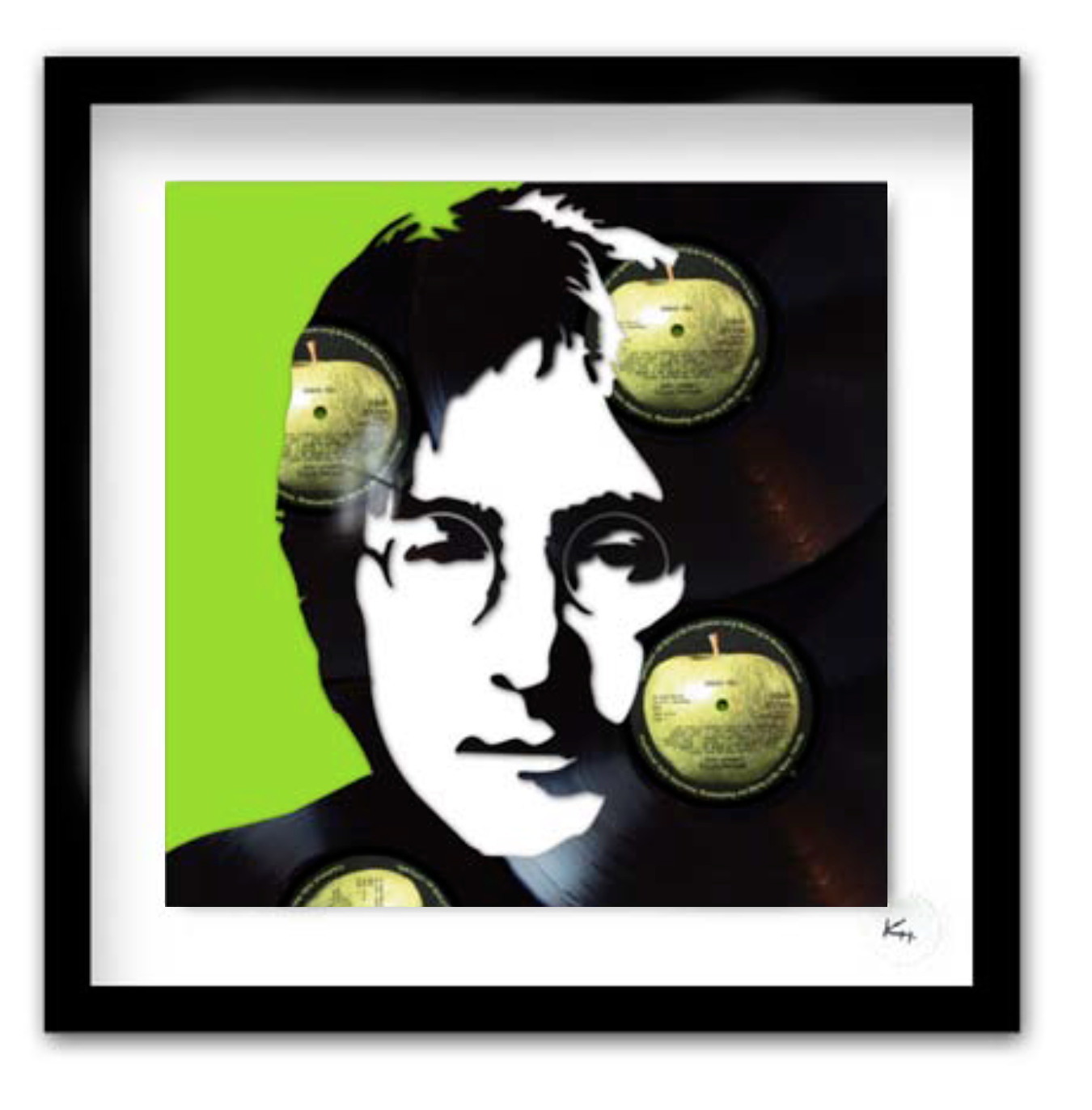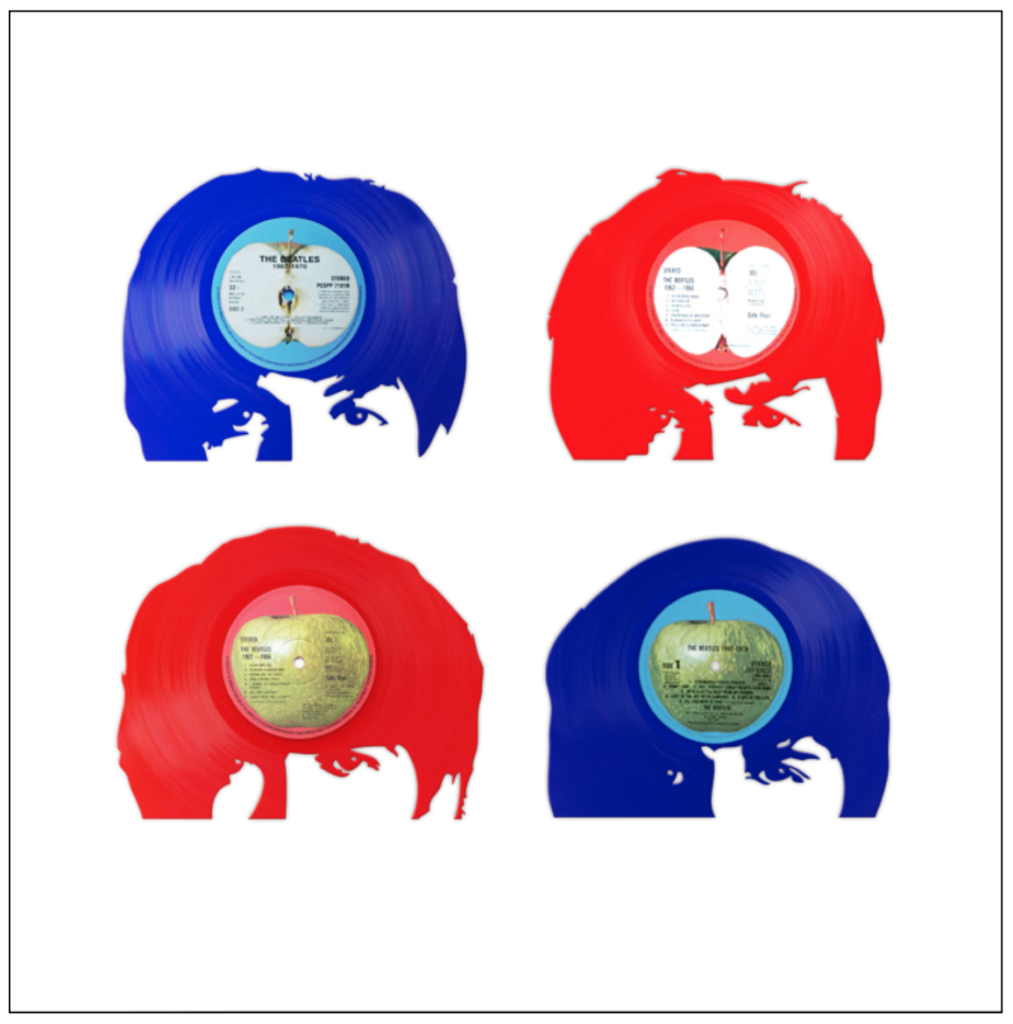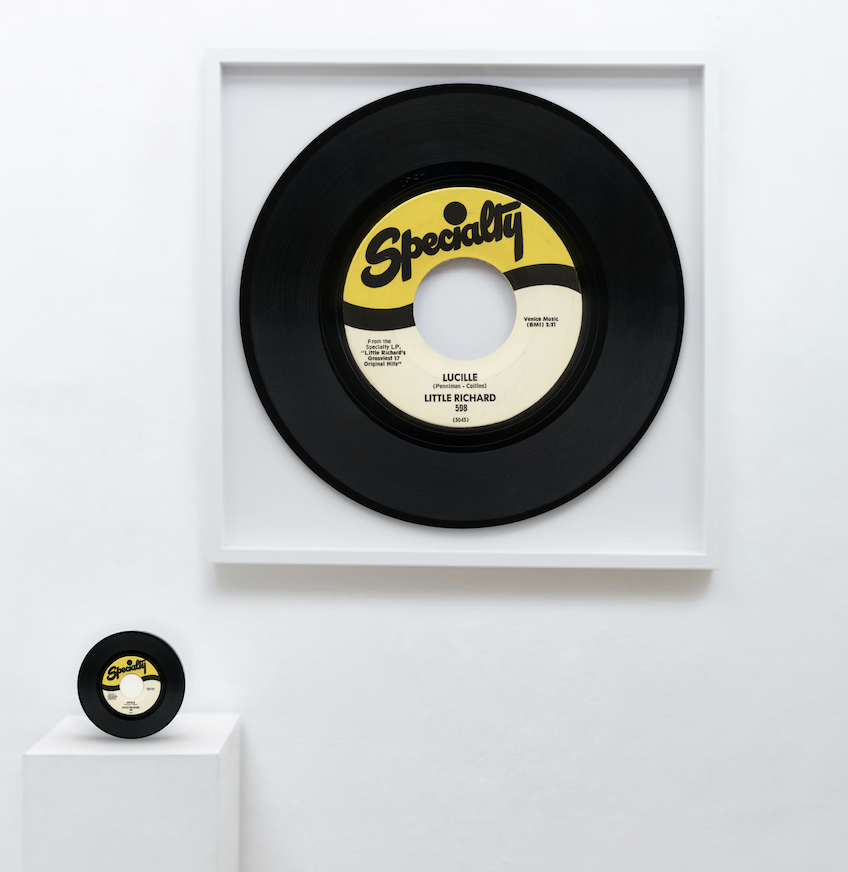We Love The Beatles!
We are delighted to present We Love The Beatles—the section of the website where we bring together all our Beatles material.
Here you will find classic photography, paintings, prints and mixed media pieces – from the early days in Hamburg through to Abbey Road.
We have so much to show you. Scroll down and take a look for yourself.
Astrid Kirchherr
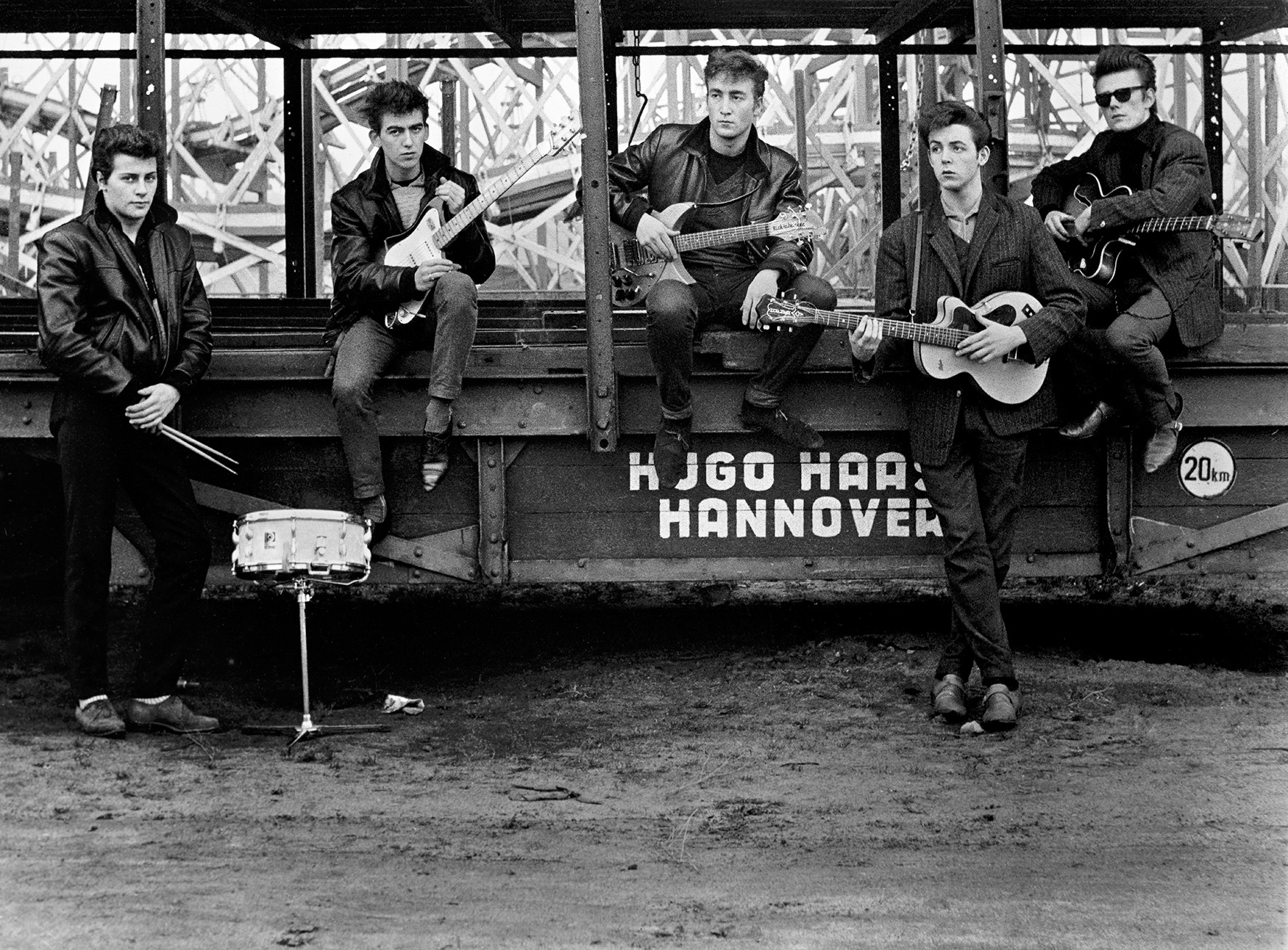
The Beatles – funfair, Hamburg, 1960
Astrid Kirchherr is probably the best known of the early Beatles photographers.
A protege of the renowned Hamburg based photographer Reinhart Wolf, she befriended the Beatles in 1960 when they were a five piece featuring Stuart Sutcliffe and Pete Best. Her well-known 1960 Hamburg funfair portraits of that five piece line-up were the band’s first proper professional photographic session.
She became engaged to Stuart Sutcliffe, who left the band and stayed with her in Hamburg. She continued on her path as a photographer after Stuart’s untimely death. A selection of Astrid Kirchherr’s early Hamburg photographs are available to purchase.
Click on the button below to see her available editions.
“Astrid was the one, really, who influenced our image more than anybody. She made us look good. She was the one who had the leather kicks and the Beatles haircut.”
– George Harrison
Roger Kasparian
Roger was working in Paris at the height of the sixties beat boom, and his subjects included the A-List of sixties pop culture: The Beatles, The Rolling Stones, The Who, Marianne Faithfull and many more.
Then, in 1970, Roger took over his father’s photographic studio, put the showbiz world behind him, and became a typical local photographer. He took pictures of marriages, birthdays and municipal councils while his classic 1960s music archive lay undisturbed – for fifty years.
This photograph of the Beatles from their concert on 20 June 1965 is a very rare beast. Beatles aficionados will know that photographs of George with a twelve string Rickenbacker are impossibly difficult to find. What’s also really special is the band’s linear formation, each one doing his individual thing, and John really belting out his vocal.
“Does it bother you that you can’t hear what you sing during concerts? No, we don’t mind. We’ve got the records at home.”
– John Lennon
Duffy
Together with David Bailey and Terence Donovan, Duffy is recognised as one of the innovators of “documentary” fashion photography, a style which revolutionised fashion imagery and furthermore the fashion industry. Duffy once famously set fire to his negatives. He didn’t destroy everything though. His son Chris, also a professional photographer, reconstructed his archive with all that was rescued. Duffy passed away in 2010.
We are delighted to offer some examples signed by Duffy, along with a beautiful nine frame contact sheet issued by the Duffy archive. The photograph of John Lennon above was taken after The Beatles had returned from the USA after playing at Shea Stadium, New York. Lennon is smiling and holding what he jokingly claimed was a “UFO Detector”.
“None of us wanted to be the bass player. In our minds he was the fat guy who always played at the back. ”
– Paul McCartney
Jean-Marie Périer
Acclaimed French photographer Jean-Marie Périer photographed the Beatles on various occasions from 1964 to 1967. In February 1967 Périer found himself camped for a week in a makeshift photographic studio, inside the Abbey Road recording studios, while the Beatles were in the midst of recording Sgt Pepper’s Lonely Hearts Club Band.
One of the most famous photographs from that session was used on the front cover of the picture sleeve of the double A-side single, “Strawberry Fields Forever / Penny Lane”. Périer deliberately set up the lighting behind the band, to create the desired effect. Sadly most of the session photographs were lost over the years, but Jean-Marie does still have a variant of the “Strawberry Fields” cover photograph in his archive and this is close to the sleeve shot – as close as it gets.
“Brian Epstein had hired me to shoot some record sleeves during the recording of Sgt Pepper’s Lonely Hearts Club Band. They needed group pictures of the four, so I had to wait a long time since it seemed there was always one of them hanging around somewhere – talking to the angels!”
– Jean-Marie Périer
Bob Whitaker
Bob Whitaker photographed The Beatles over a key two year period, from 1964 to 66. His photograph of The Beatles with dismembered dolls and raw meat was used on the infamous US Yesterday and Today Butcher sleeve.
Born in England to an English mother and Australian father, Bob Whitaker (1939-2011), was well-known for his innovative photographic style. He was heavily influenced by his good friend Salvador Dali and this can be seen in the surreal images he took. His straight-forward, no holds-barred approach to photography left many of his subjects at ease, and allowed him to get closer than others before. Following the Beatles final world tour Bob went back to London, to help create the notorious hippy magazine “Oz”, with Martin Sharp.
We show a small selection of Bob Whitaker’s Beatles limited editions here. Click on the button below to view the wider collection.
Bob Whitaker created this set of bold and dramatic screen prints around 2005. Just 25 sets exist. Each print is made on on 27.5 x 39.5 inch paper, and numbered out of 25 under the image area in pencil. One print in each set has been signed by Bob Whitaker. They are offered as a complete set of four.
“The schedules were punishing. You hardly knew which city you were in. What I mostly remember about touring is being constantly ushered onto planes along with the Beatles and their supporting cast.”
– Bob Whitaker
Barrie Wentzell
Barrie Wentzell was one of the photographers at the Sgt Pepper’s press launch held at Brian Epstein’s house in London’s Chapel Street in May 1967 – the first time that The Beatles’ Sgt. Pepper’s Lonely Hearts Club Band LP was played to the assembled media.
Barrie recalls the days fondly – “This was the first time I’d met and photographed The Beatles. It was at the launch party for Sgt. Pepper at Brian Epstein’s house in Belgravia – a very posh part of London. There were people there from the press and elsewhere, and The Beatles were walking around talking and laughing.
I was taking a few shots inside the house when Derek Taylor, their wonder press officer, suggested all the press and photographers go outside and we’ll do some pictures by the door. I managed to crawl up to the front through the crowd and get this picture of the “Fab Four”.
Press:“Why is it that you Ringo get more fan mail than the others?”
Ringo:“I dunno. I suppose it’s because more people write me.”
Sir Peter Blake
Sir Peter Blake is one of the UK’s foremost Pop Artists. In 2007, in a collaboration with Apple, he released a limited edition screen print of his artwork for the Sgt Pepper album cover. These sold out when first offered on the market, but from time to time we secure examples
Peter Dean: the limited edition Mr. Kite letterpress print
Rolling Stone magazine has described it as “simply stunning”, the V&A Museum have it in their permanent collection and Paul McCartney owns one. We are big fans of the analogue production values of the traditional letter press printing process. We are delighted to offer a handmade letterpress print by artist Peter Dean of the poster that inspired ‘Being for the Benefit of Mr. Kite!’, the song that closes side one of The Beatles’ 1967 album, Sgt. Pepper’s Lonely Hearts Club Band.
Iain Macmillan
Scottish photographer, Iain Macmillan (1938-2006), was introduced to the Beatles through Yoko Ono who he worked with in 1966: Iain included a photograph of her in “The Book of London”, a collection of his photographs published that year. She then commissioned Iain to document her exhibition at London’s Indica gallery, and as a result, Iain was introduced to John Lennon – establishing the Beatles connection. Subsequently, John Lennon invited Iain to photograph the Abbey Road cover.
On Friday, 8 August, 1969, John Lennon, Paul McCartney, George Harrison and Ringo Starr walked over the zebra crossing next to Abbey Road studios. There and back. Three times. Six clicks of the shutter. Just six photographs, and the shoot was over. Three frames showing the Beatles crossing from left to right, and three walking from right to left. The same order in each of the six frames – John Lennon first in white, then Ringo Starr in black, Paul McCartney in grey, barefoot, holding a cigarette in his right hand (all three in Tommy Nutter suits) and at the back, a denim clad George Harrison.
The fifth frame of six, showing a left to right traverse, was chosen as the actual cover.
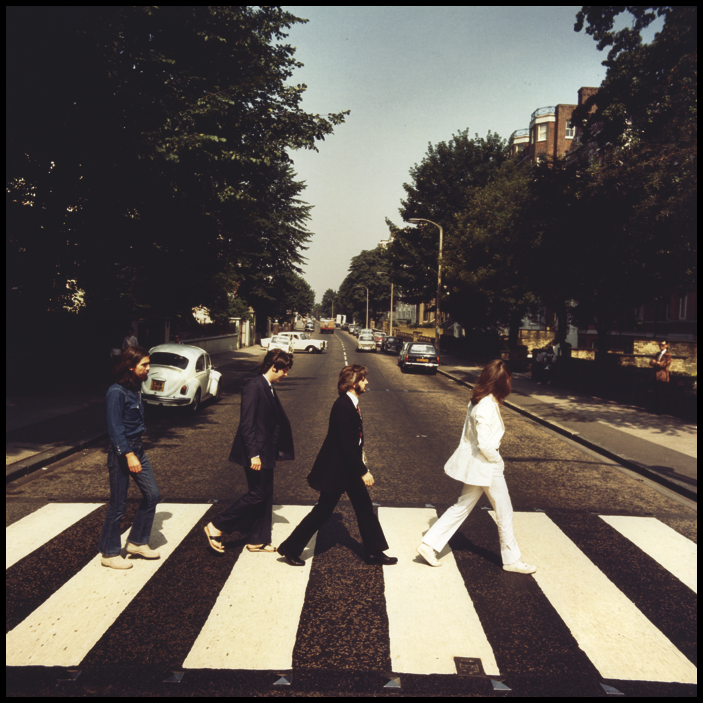
Abbey Road Session Frame 1
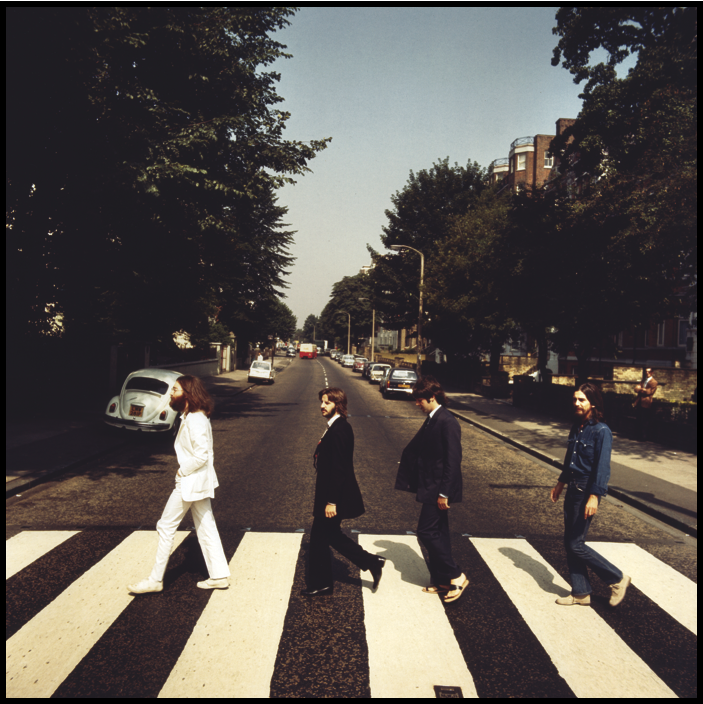
Abbey Road Session Frame 2
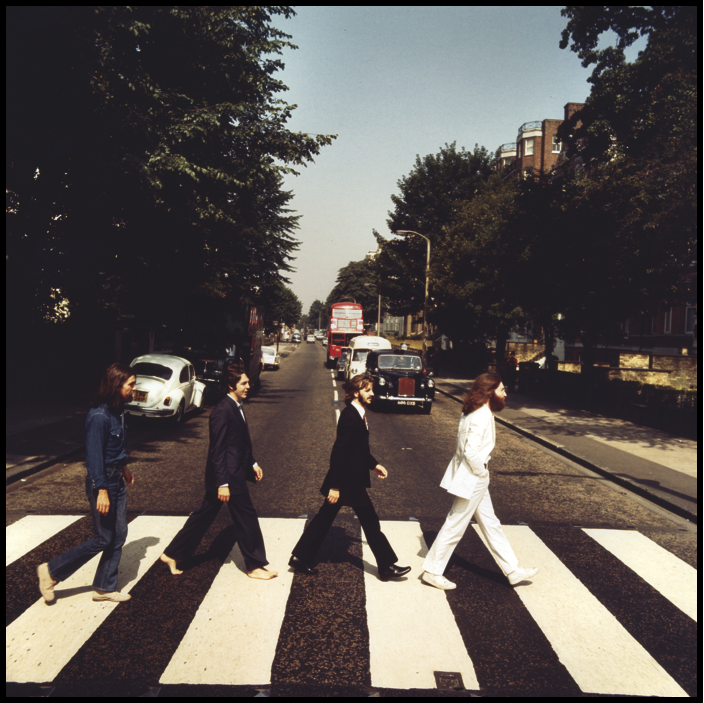
Abbey Road Session Frame 3

Abbey Road Session: Back Cover
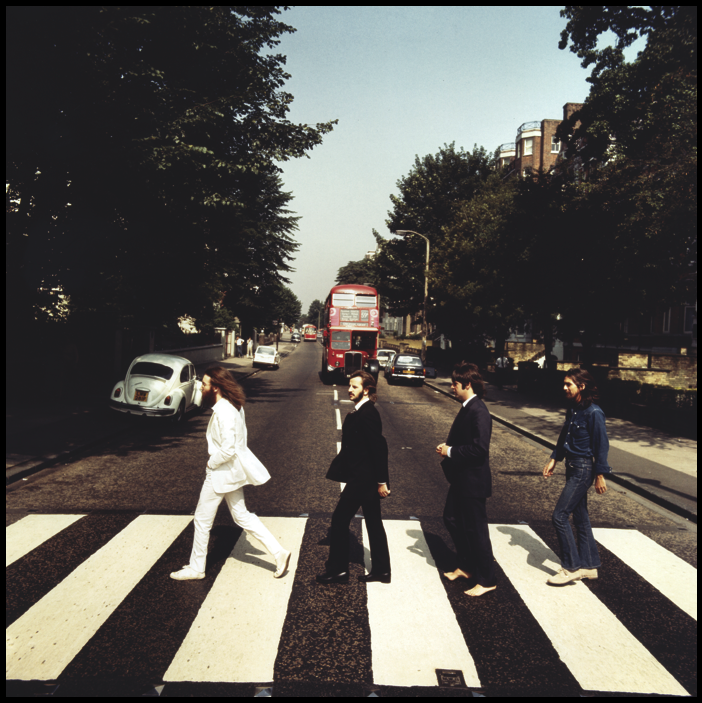
Abbey Road Session Frame 4

Abbey Road Session Frame 5: The LP Cover Photograph
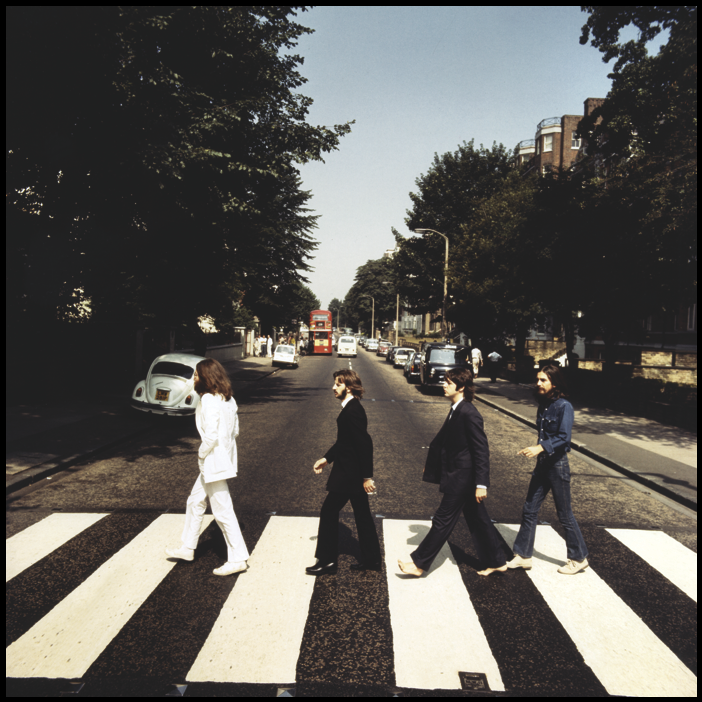
Abbey Road Session Frame 6
Supplies of Abbey Road material are extremely limited. Please get in touch with us at the gallery for information
“Everything will be ok in the end. If it’s not ok, it’s not the end.”
– John Lennon
Keith Haynes
Keith’s work explores pop art in its purest form, using album sleeves, record labels, badges and, of course, beautiful, black vinyl – not only as its subject, but also as its raw material.
Keith’s work is a playful and often-nostalgic exploration of popular culture, and in particular, popular music culture from his past to the present day. Whether it’s a graphically iconic portrait or a meaningful song lyric, each piece is created from original vinyl records chosen to enhance the subject matter; in these works the Subject and the Object are of equal importance. His current work has been exhibited extensively in the UK and overseas and can be found in private collections in the UK, Europe, America, Hong Kong, Singapore and Australia.
We have a selection of Keith’s Beatles artwork on show, including a spectacular new piece, Love Me Do, shown alongside, which is being shown for the first time in the exhibition.
Red and Blue. A masterstroke by Alan Klein, many younger fans’ introduction to the Beatles came through the 1973 double album sets 1962-66 and 1967-70: a.k.a. The Red Album and The Blue Album. Keith Haynes celebrates these classic compilations in this 70 x 70 x 6 cm artwork, presented in an acrylic box frame, using cut versions of the red and blue albums – in red and blue vinyl.
What’s your favourite Beatles album? Tough one. I think I would have to say, The Best Of The Beatles.”
– Alan Partridge
The Temple of Wax
The Temple of Wax – featuring The Beatles, and songs covered by The Beatles
We have been really humbled by the fantastic response to our bespoke Temple of Wax service.
Our purpose in launching the Temple of Wax has been to celebrate a favourite piece of music by turning it into an incredible artwork – made just for you. We take that cherished vinyl record and transform it into a large-scale work of art that you can hang on your walls at home or at work and enjoy every single day.
Whatever you choose, we can transform – in a size of your choice up to 100 cm/39 inches in diameter – into a huge three dimensional version. The large scale does something really quite incredible and dramatic to the original – like nothing you will have seen before. The finished artwork looks like a real record. It is circular. The central hole is removed. It is three dimensional. You can see the detail in the grooves, and it has a custom ultra-high-gloss finish that makes colours just ‘pop’.
In the exhibition we include classic Beatles pieces, and some key 45s they covered – like Lucille here. If you haven’t commissioned a piece, maybe now is a good time.

